Soft sunlight, tactile textures, and a conscience as clean as your countertops — today’s organic kitchen goes far beyond “green” buzzwords. Designers are blending reclaimed woods, toxin-free finishes, biophilic touches, and smart efficiency to create rooms that nourish body and planet alike. Industry trend trackers note a sharp rise in natural materials like bamboo, recycled glass, and honed stone for 2025 remodels, while homeowners increasingly ask for energy-saving induction ranges and integrated compost centers to shrink their footprint.
1. Reclaimed Wood Cabinets Ground Your Organic Kitchen
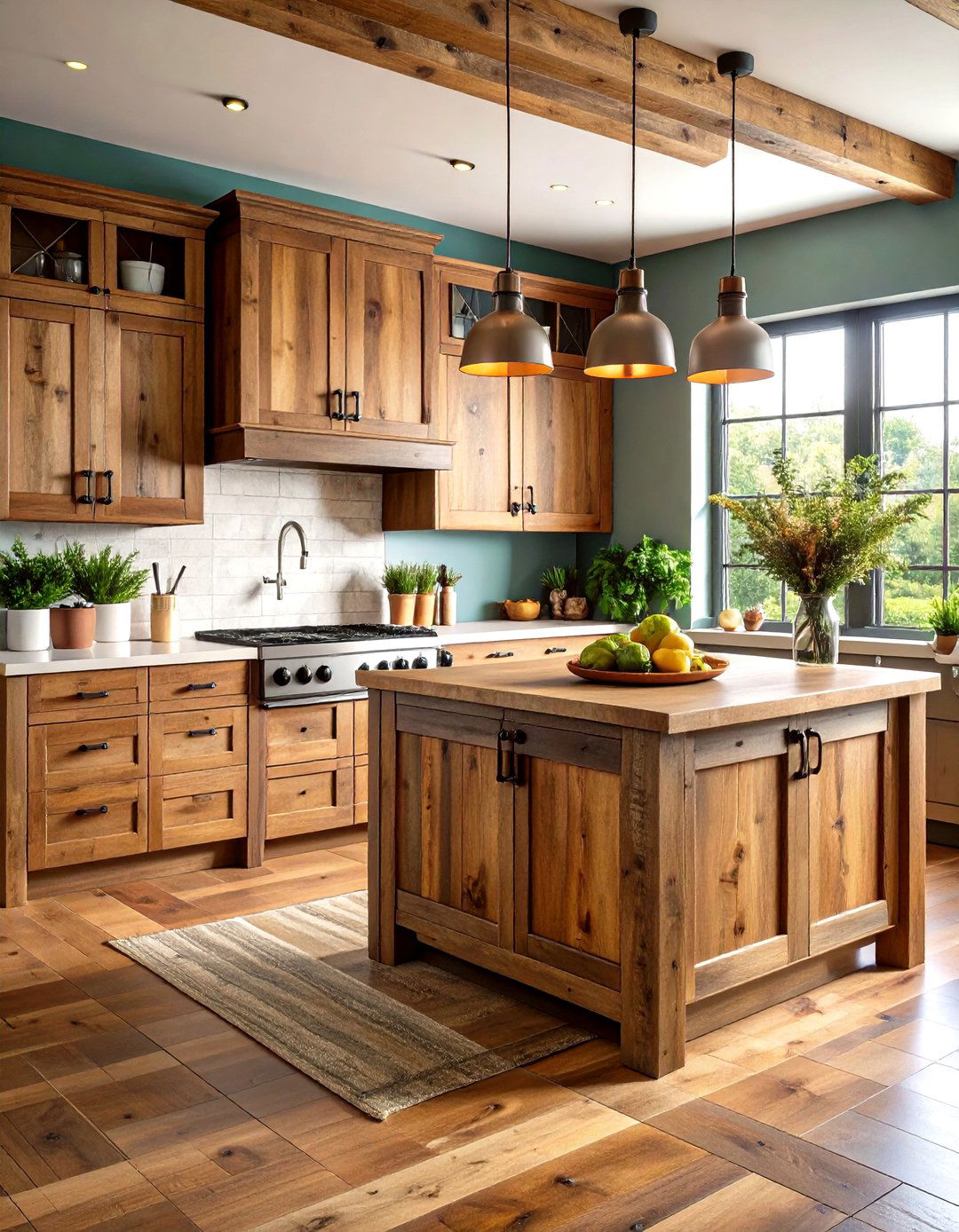
A welcoming start is to swap factory-fresh MDF for cabinets made of salvaged barnwood or dismantled floor joists. Reclaimed timber carries the rich patina of age, instantly layering story and warmth into an organic kitchen while sidestepping the carbon cost of new lumber. Designers love pairing these time-softened fronts with sleek concealed pulls so the grain stays the star. Finish the wood in plant-based oils to keep VOCs near zero and let knots, nail holes, and saw marks double as conversation pieces — proof that sustainable choices can look luxuriously bespoke.
2. Honed Stone Countertops Add Earthy Elegance
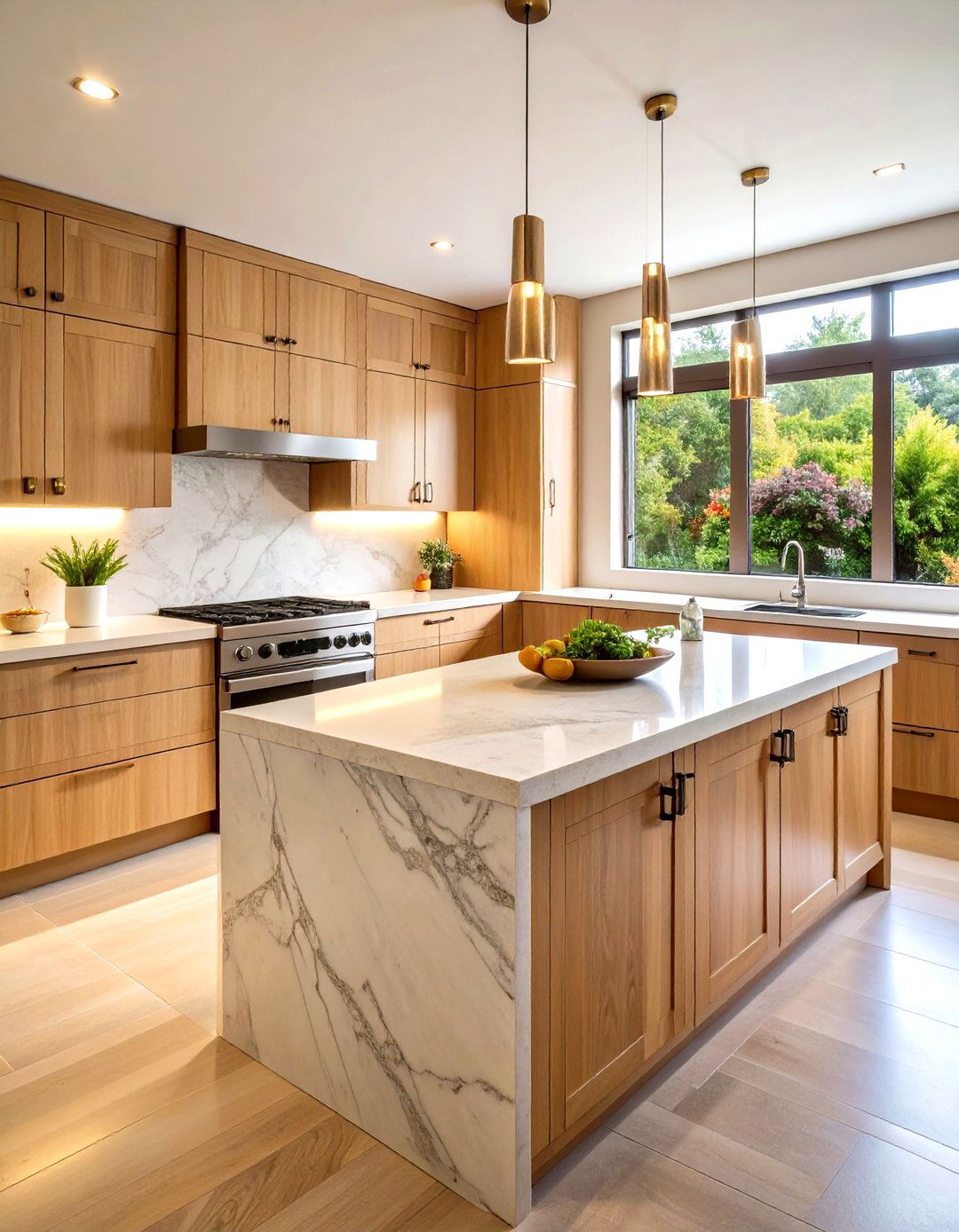
Unlike high-gloss slabs, honed marble, quartzite, or soapstone come with a soft matte sheen that feels organic underhand and disguises minor etching — a practical win for cooks who love citrus. Designers tout honed surfaces for enveloping a kitchen in “warm minimalism, ” where texture, not shine, steals focus. Pairing the muted finish with pale oak cupboards completes a grounded palette that will outlast fast-changing trends. Because honed stone is sealed but not polished, fabrication generates slightly less wastewater, adding another eco-tick to your countertop checklist.
3. Recycled-Glass Counters Sparkle Responsibly
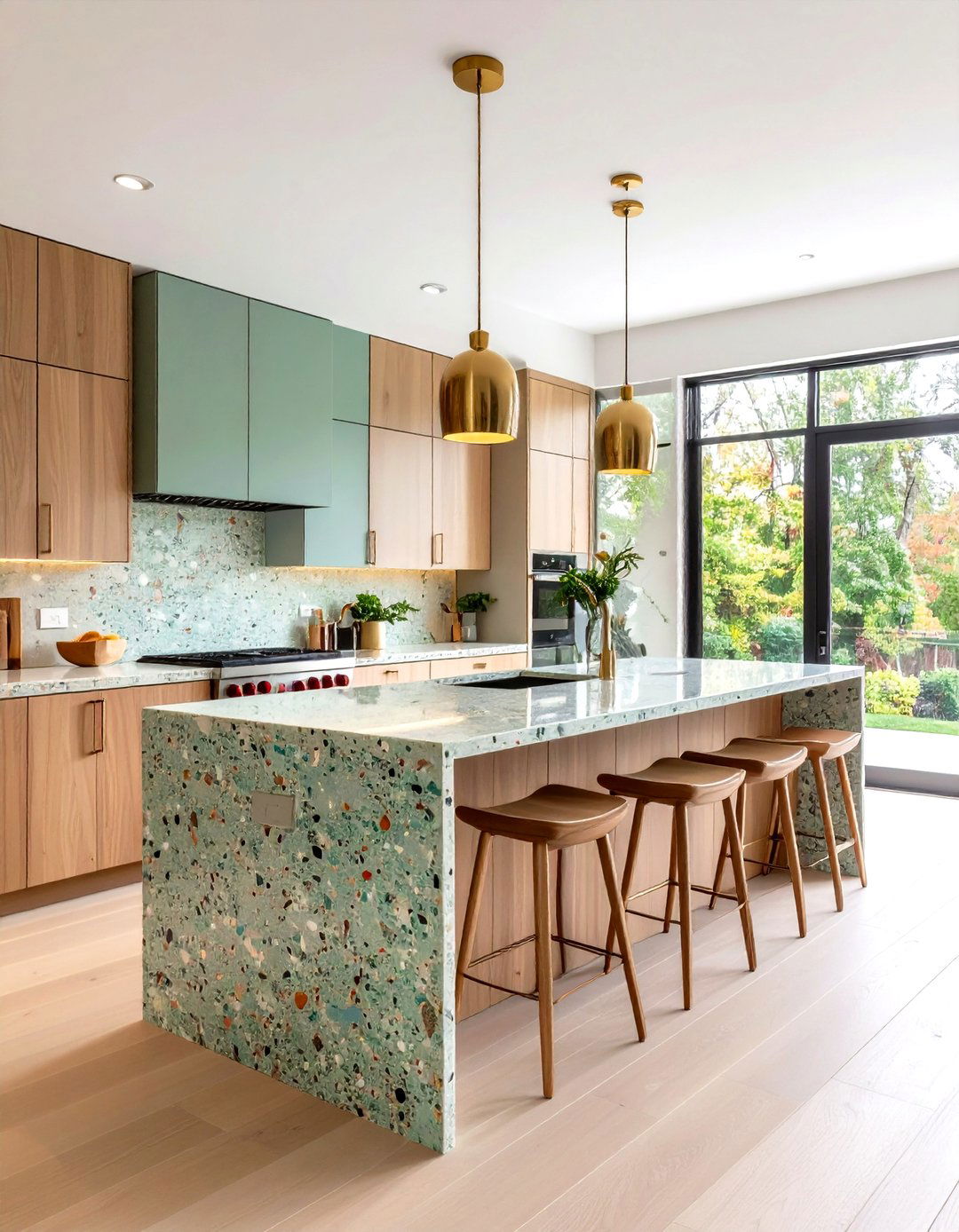
For a countertop that gleams like terrazzo yet keeps bottles out of landfills, choose a recycled-glass composite. Brands such as IceStone fuse post-consumer glass with low-carbon cement binders to create durable slabs in sea-tumbled hues. Each piece contains up to 70 % recycled content, and the unique flecks read as subtle jewelry for an organic kitchen. Maintenance is simple — just a pH-neutral cleaner — and the material is Cradle to Cradle Gold certified, so you know sustainability claims aren’t marketing fluff.
4. Clay-Plaster Walls Regulate Humidity Naturally

A, the walls themselves can work for you. Clay plaster — an ancient, zero-VOC finish — absorbs excess moisture when you simmer pasta and quietly releases it later, helping stabilize indoor humidity. Its velvety matte surface diffuses light, softening harsh task spots and wrapping the organic kitchen in an earthy calm no paint can match. Because clay contains no cement, its embodied carbon is a fraction of gypsum drywall, and minor scuffs repair with a damp sponge instead of messy sanding. Opt for mineral pigments to keep the palette breathable and timeless.
5. Living Herb Walls Bring Taste and Texture
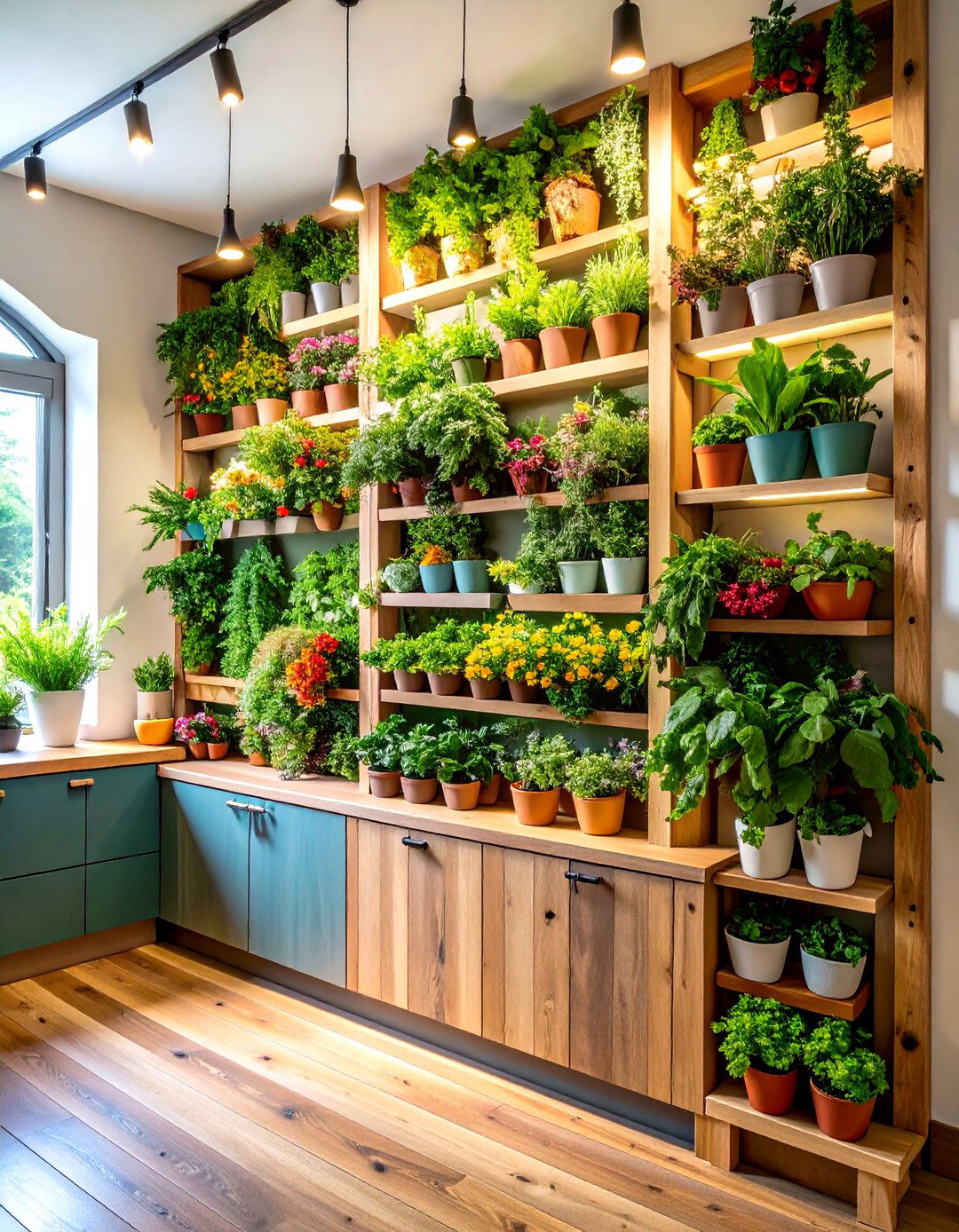
For cooks who want basil fresher than the farmers’ market, a vertical hydroponic garden turns backsplash real estate into an edible tapestry. Systems such as self-lit smart planters or wall-mounted troughs make watering nearly foolproof. Beyond flavor, the living greenery filters indoor air and boosts well-being — key goals of biophilic design. Frame the installation in reclaimed wood for cohesion, and watch how the scent of mint mingling with warm timber defines the soul of your organic kitchen.
6. Non-Toxic, Low-VOC Cabinet Boxes Protect Indoor Air
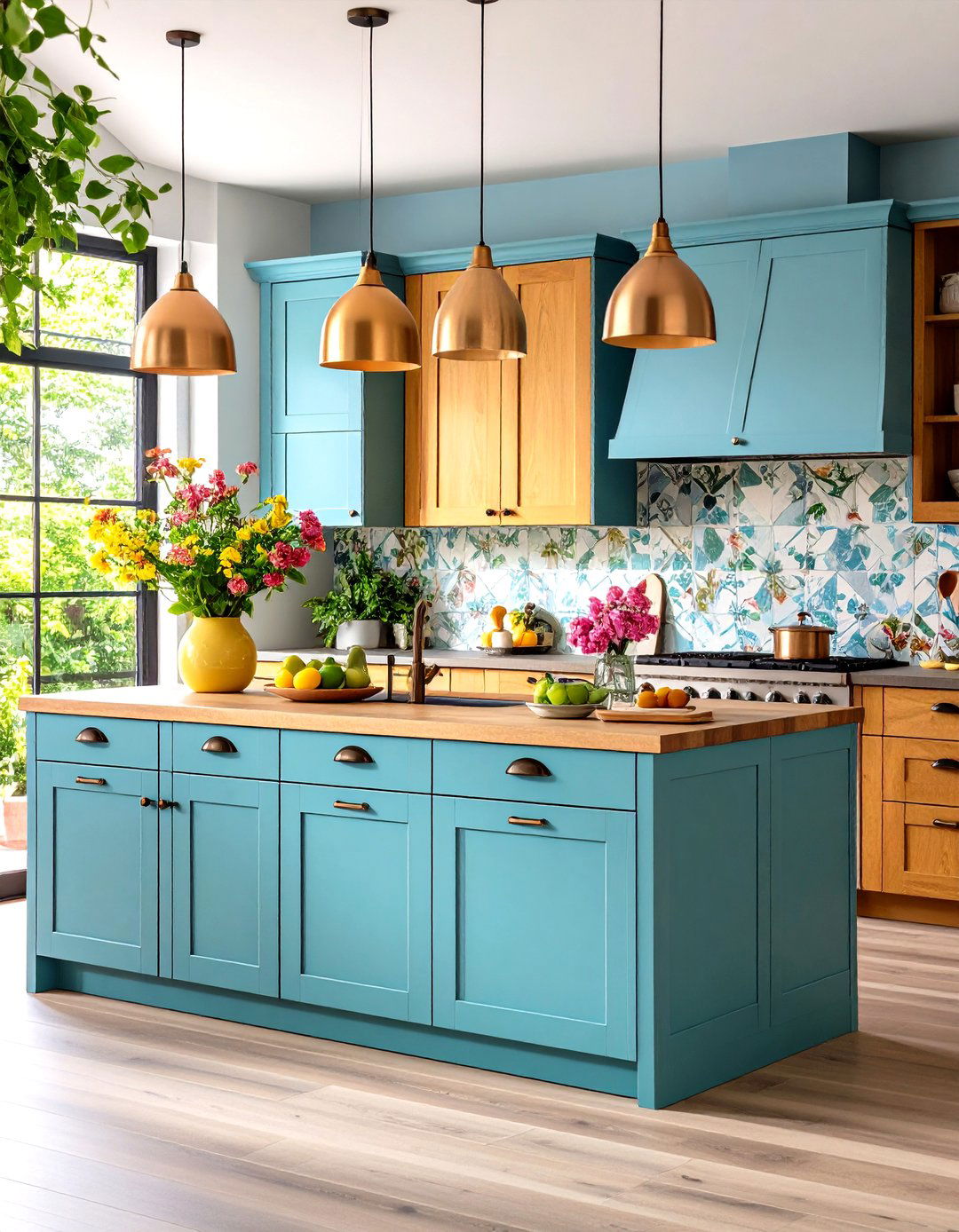
Despite pretty doors, many standard cabinets off-gas formaldehyde from particleboard cores and solvent-heavy finishes. Opting for solid-wood boxes joined with low-emission adhesives and sealed in water-based varnish keeps the heart of your organic kitchen healthy. Canadian contractor Mike Holmes recommends verifying CARB-2 or TSCA Title VI compliance and choosing brands that publish GREENGUARD Gold certificates. Some Scandinavian manufacturers go further, using linseed-oil treatments that are entirely food-safe.
7. Bamboo Surfaces Deliver Rapid-Renewable Style
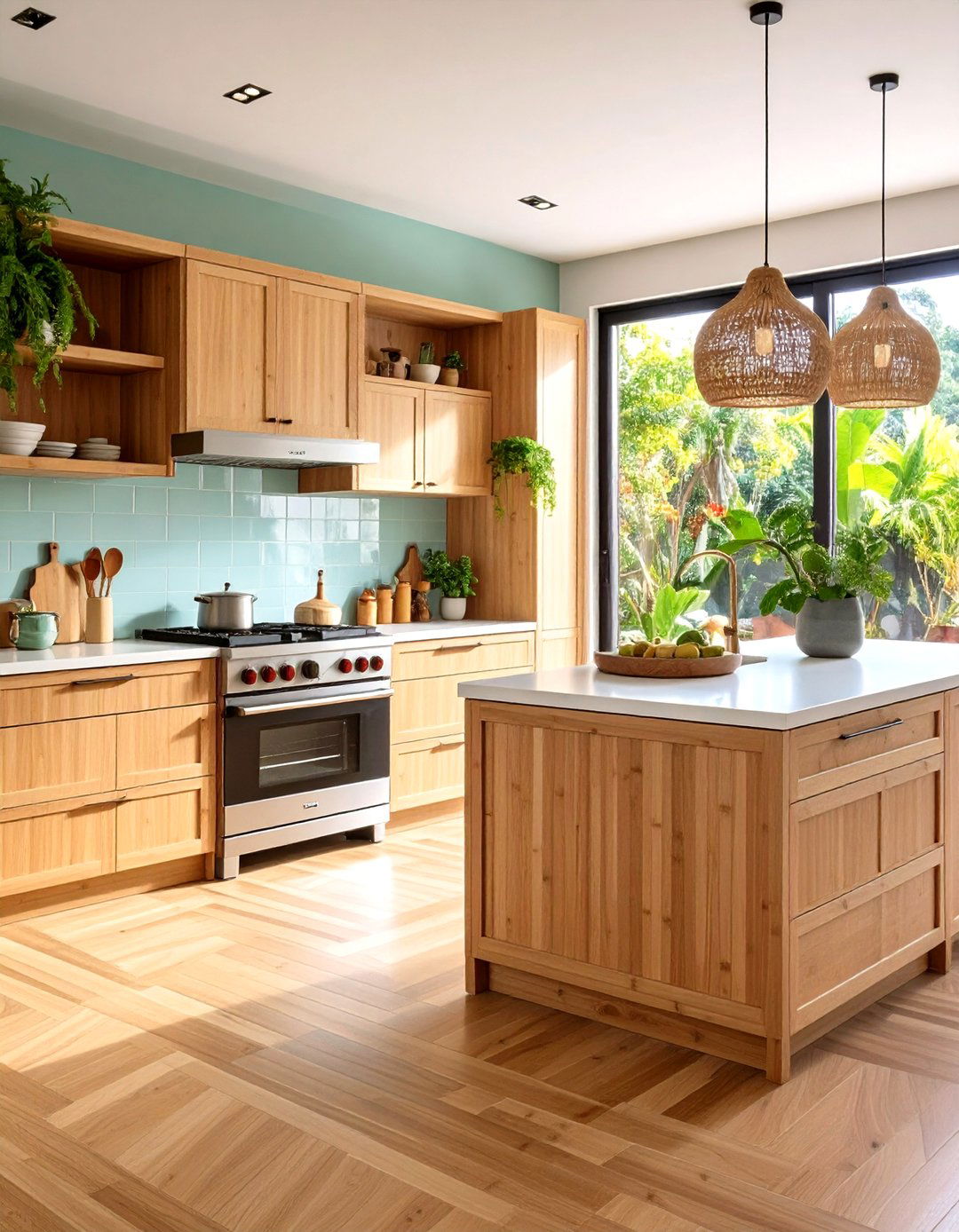
Consider swathing drawer fronts or flooring in strand-woven bamboo — technically a grass that matures in just five years, slashing resource depletion. The tight grain takes stains beautifully, so you can echo walnut or maple tones without harvesting slow-growth timber. Because bamboo fibers run in multiple directions, the planks resist denting, an asset for busy family kitchens. Finishing with naturally derived wax keeps allergens at bay and emphasizes bamboo’s subtle linear pattern — an understated hallmark of the organic kitchen aesthetic.
8. Induction Cooktops Boost Efficiency and Indoor Comfort
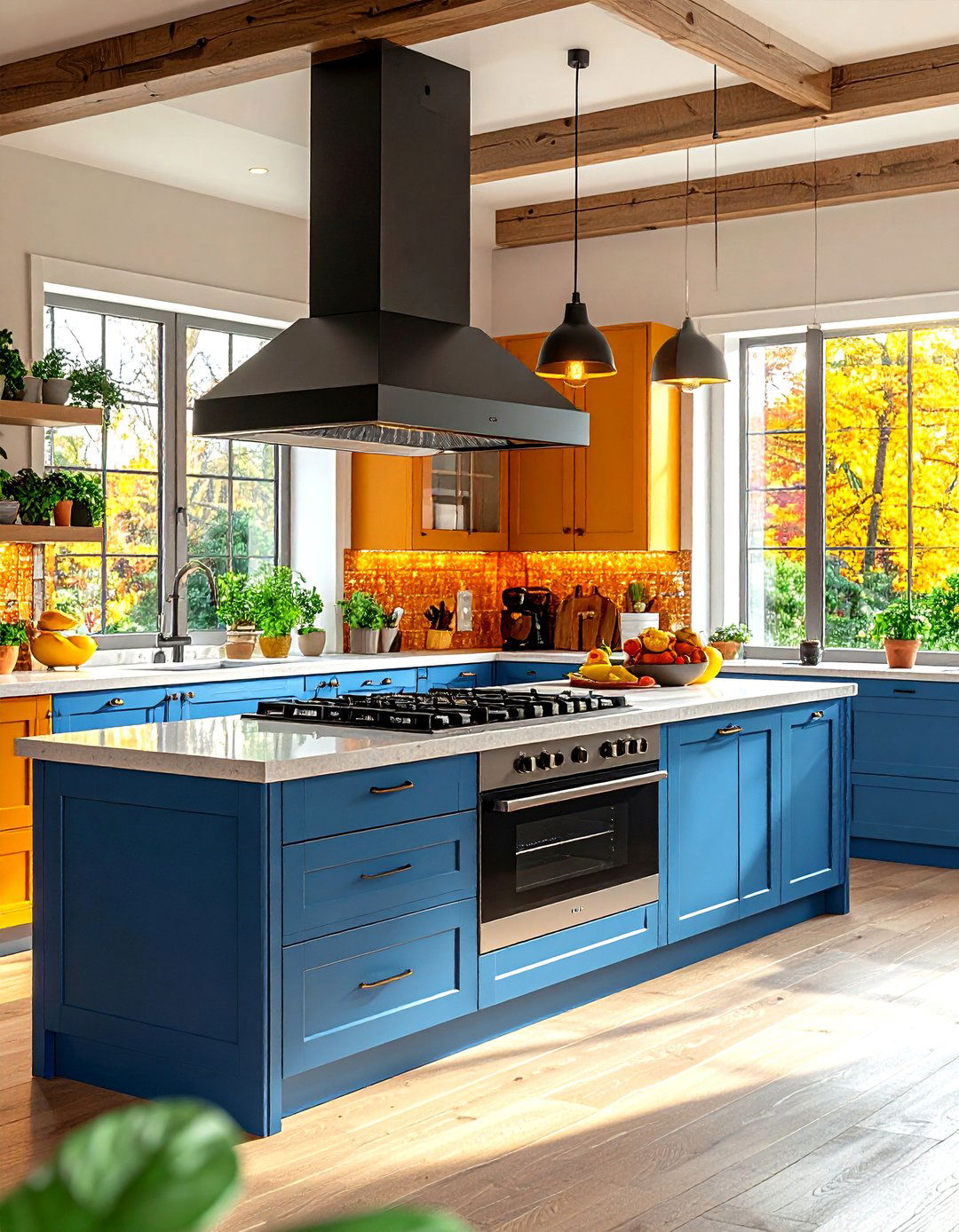
Unlike gas hobs that lose roughly 60 % of their heat to ambient air, induction delivers up to 84 % of energy straight to the pan, cutting cooking times and utility bills. The glass surface stays relatively cool, which means less residual heat and lower HVAC loads — important in well-insulated organic kitchens. Pair the cooktop with a recirculating range hood equipped with charcoal filters; you’ll avoid fossil-fuel emissions and reduce the need for exterior venting.
9. LED Task Lighting Saves Watts, Not Style
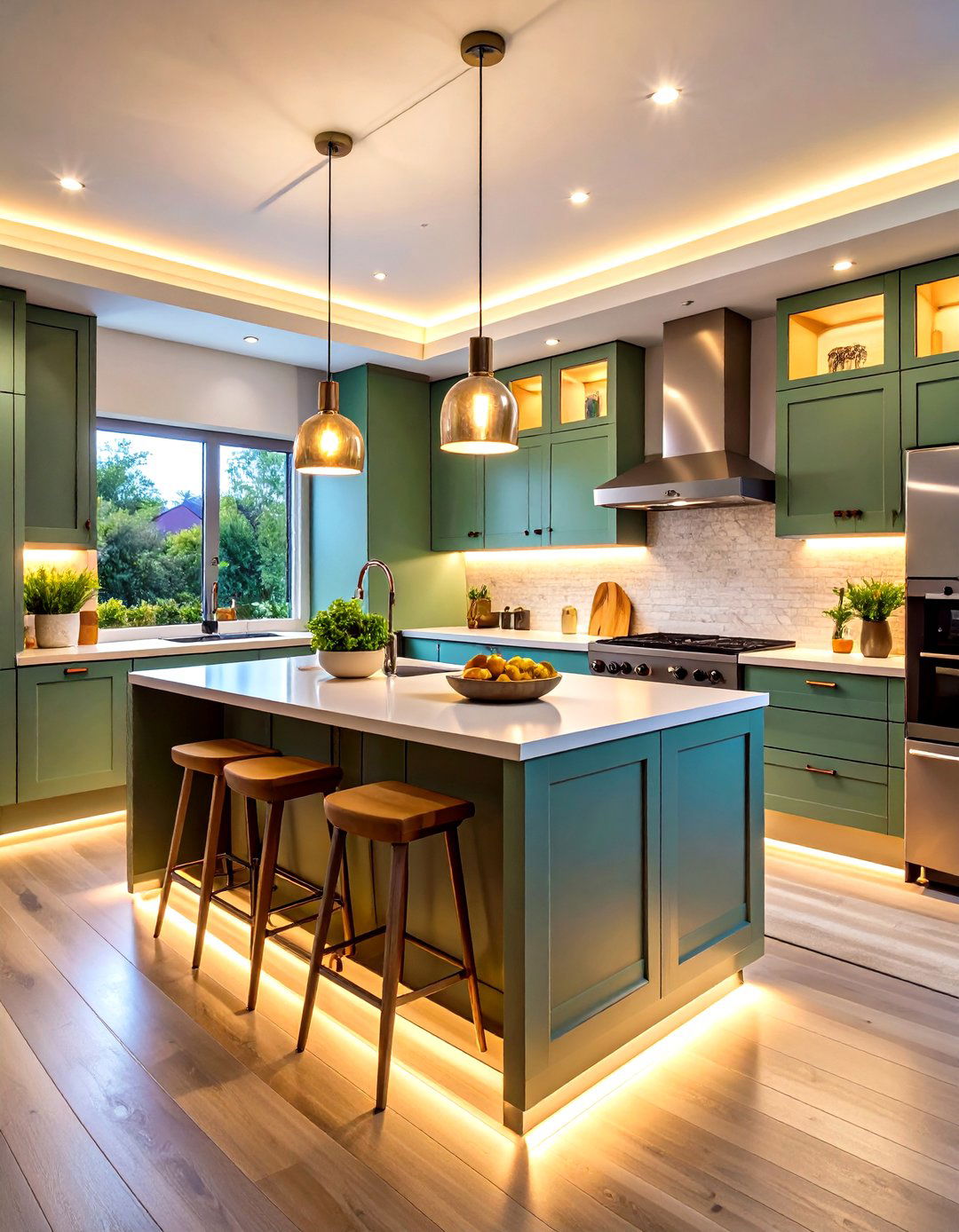
With lumens-per-watt figures that trounce halogen strips, modern LED under-cabinet fixtures illuminate chop zones while using pennies of electricity per year. Choose dimmable, CRI-90 bars in a warm 2700-3000 K range to flatter wood grain and food alike. Smart models pair with motion sensors that shut off when you exit, aligning perfectly with an organic kitchen’s low-impact ethos. Many kits are plug-and-play, avoiding hard-wiring headaches during retrofits.
10. Raw-Edge Open Shelving Adds Honest Texture
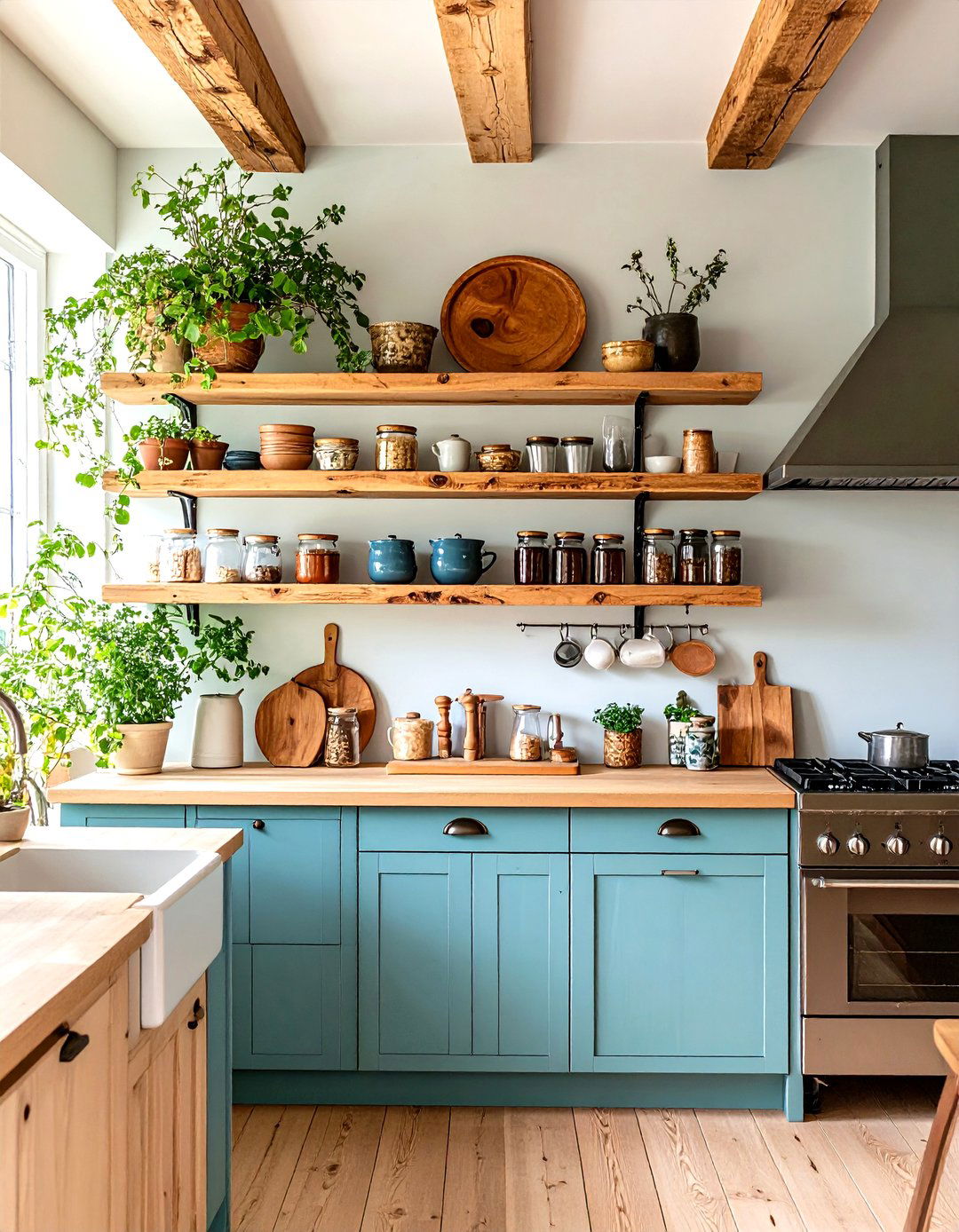
Unlike perfectly paint-grade uppers, chunky solid-wood shelves — live edge optional — celebrate knots, cracks, and sap lines. Their casual display encourages mindful curation: hand-thrown mugs, brass mortar, or heirloom cookbooks become rotating art. Designers advise anchoring shelves to contrasting plaster or tile so the natural timber pops. This airy storage lessens material use, keeps cleaning straightforward, and lets natural light penetrate deep into your organic kitchen.
11. Earth-Tone Palettes Warm Minimalist Spaces
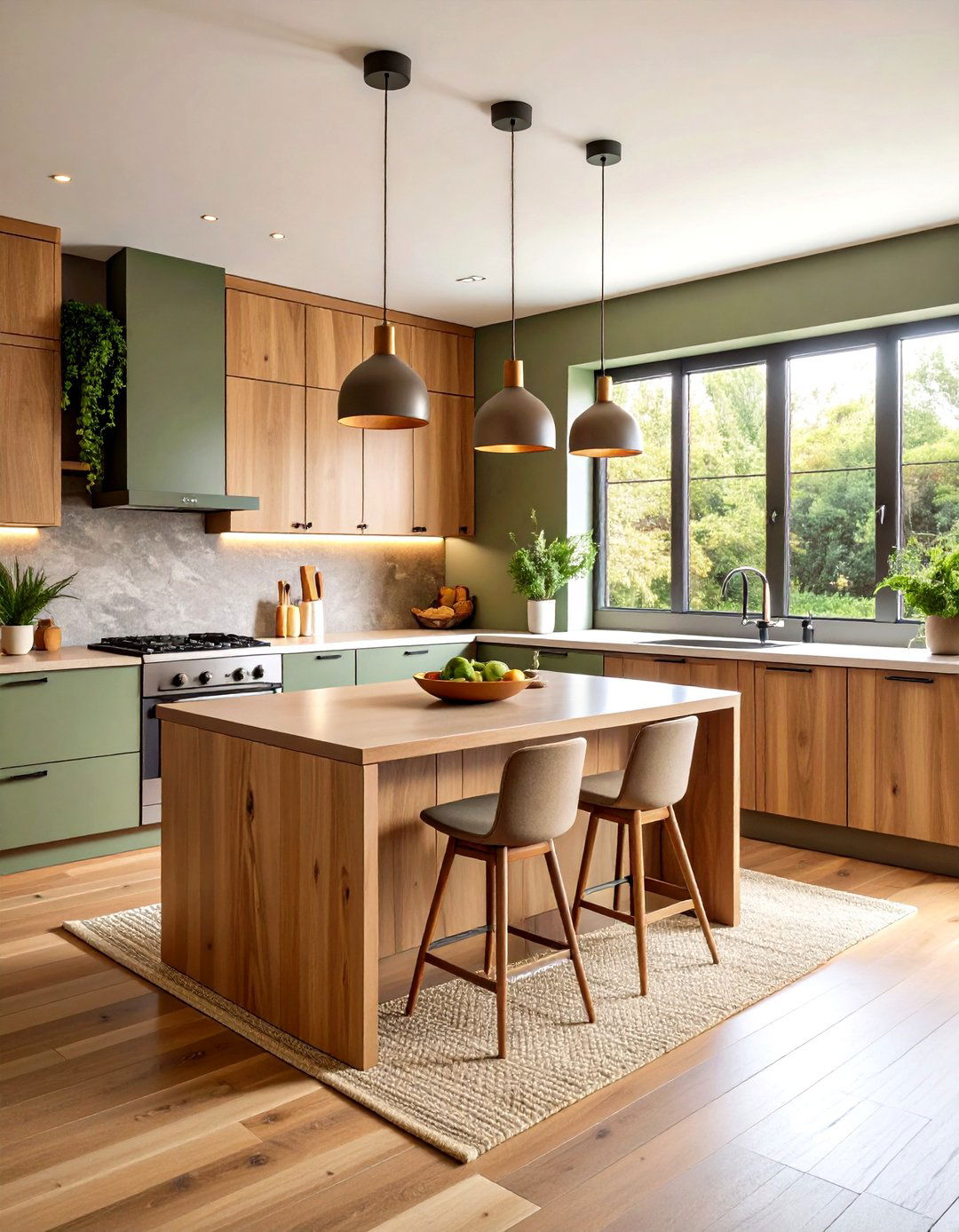
Studies show that muted ochres, soft clays, and misty greens ease eyestrain and evoke calm. Such hues complement organic kitchen staples — wood, stone, woven fibers — without competing for attention. Color specialists predict these tones will dominate 2025 renovations as homeowners pivot from stark white to “warm minimalism, ” a look that feels elevated yet grounded. Pair clay-colored walls with limestone counters, or introduce sage on a prep-island base for subtle contrast.
12. Linen Window Treatments Diffuse Hard Light
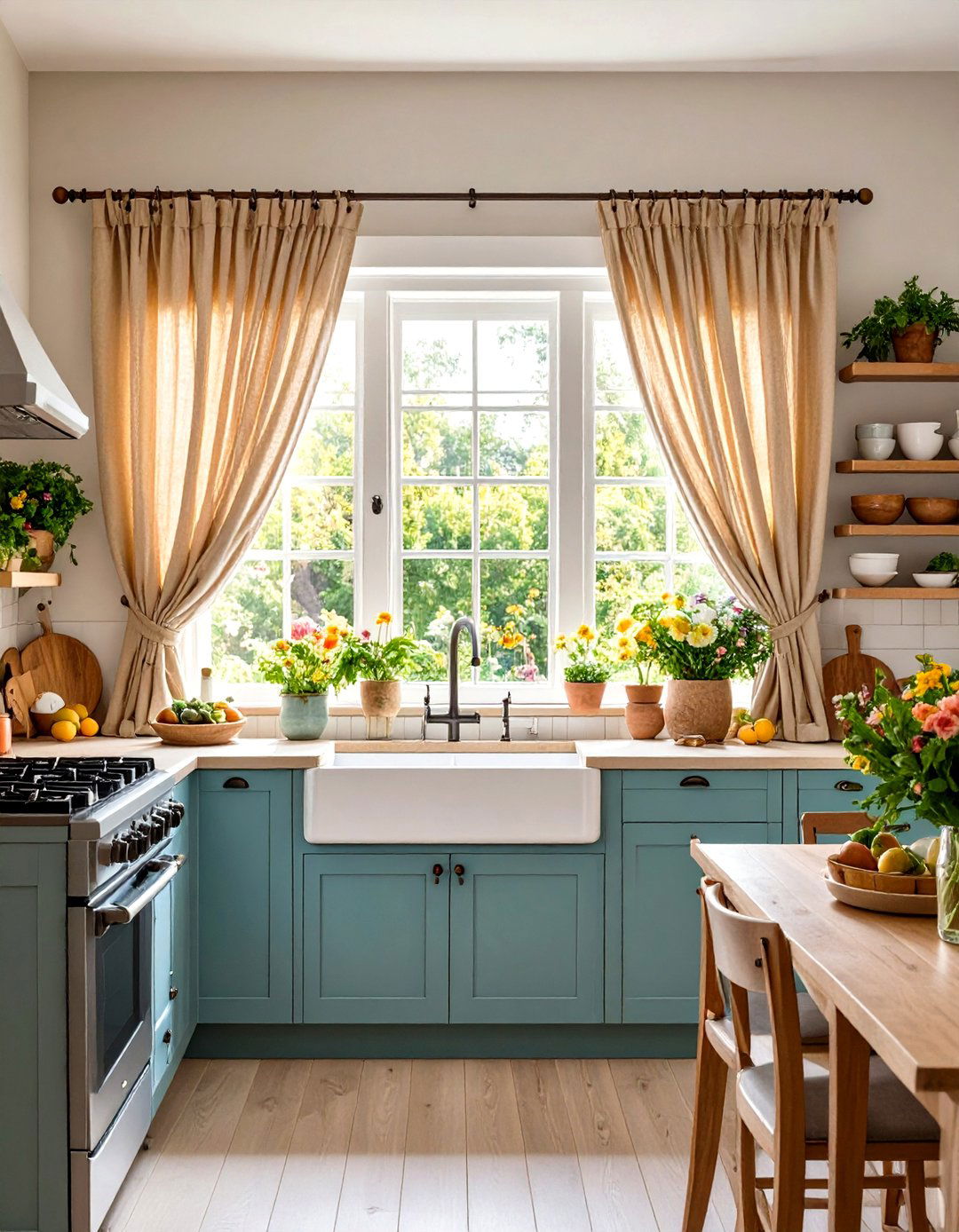
When harsh afternoon sun glares off steel appliances, breezy organic-cotton or linen curtains filter rays without blocking ventilation. The plant fibers’ slubby texture mirrors nearby butcher-block tones, enhancing the layered tactility prized in organic kitchens. Look for panels certified Oeko-Tex Standard 100 to ensure dyes are free from heavy metals, and use simple wooden dowel rods instead of metal hardware to keep the aesthetic cohesive.
13. Rattan or Seagrass Seating Softens Hard Surfaces
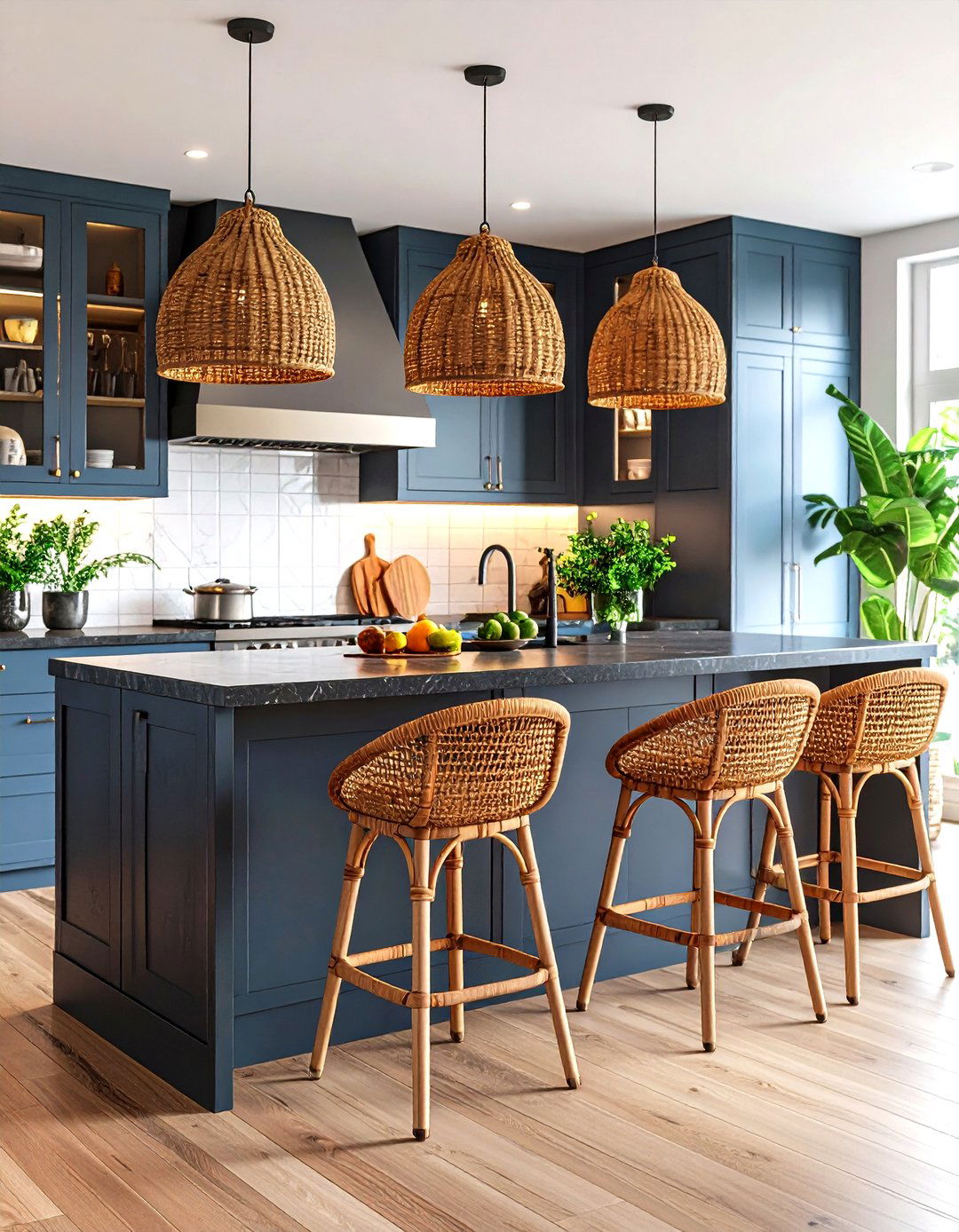
Unlike bar stools in cold chrome, woven rattan or seagrass bases lend flexible comfort and a beachy informality perfect for family gatherings. These fast-renewable fibers pair particularly well with dark stone islands, balancing polish with texture. To extend longevity, specify clear water-based lacquer that seals but doesn’t alter the straw-honey color so central to an organic kitchen’s visual warmth.
14. Built-In Compost Hatches Keep Counters Clear
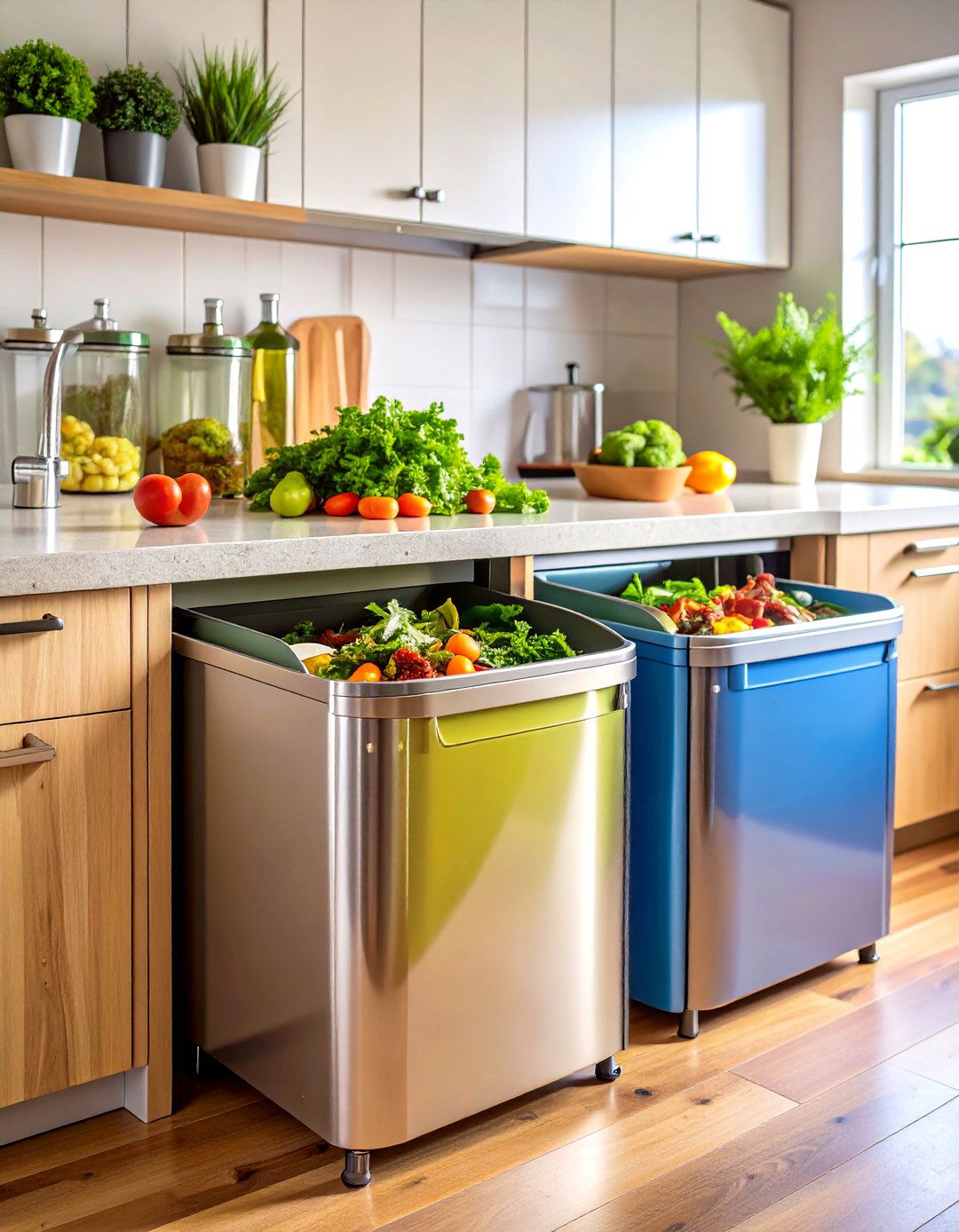
Architects designing zero-waste kitchens carve a sealed compost chute into the countertop that drops scraps into a lidded bin below. The system eliminates extra countertop pails and encourages habitual separation of peels and coffee grounds. Line the pull-out with washable stainless steel to nix odors and make emptying easy. By weaving waste management into cabinetry, the organic kitchen becomes a closed-loop ecosystem, not just a pretty face.
15. Touchless, Water-Saving Faucets Offer Hygienic Convenience
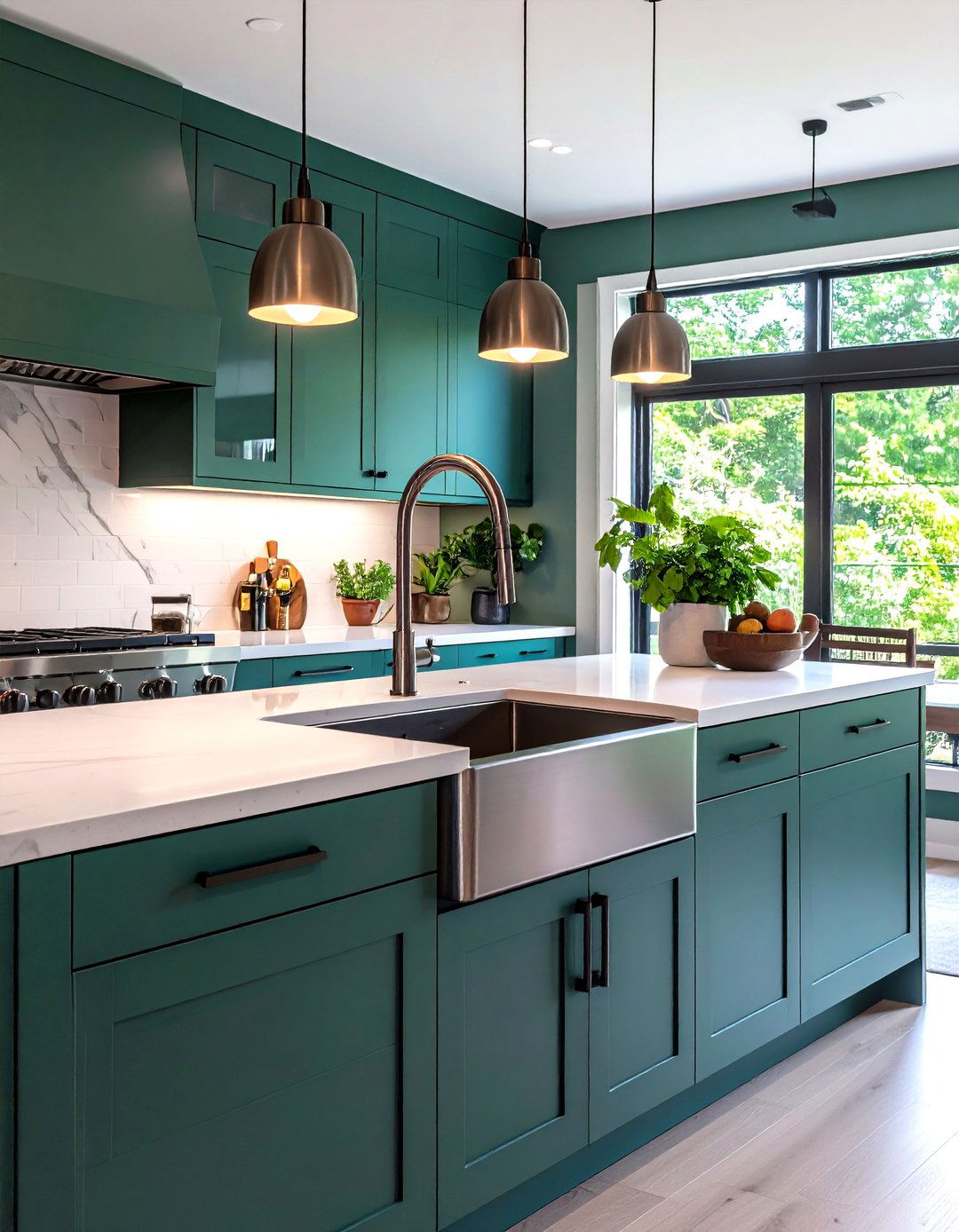
Sensor-activated faucets slash accidental run time and reduce germ transfer — handy when kneading dough. Models certified as WaterSense deliver as little as 1. 5 GPM without sacrificing pressure. Select LEDs that flash red when filters need changing, extending fixture life and preventing micro-leaks. Installing a foot-pedal valve under the sink provides manual override in case of power loss, marrying tech with resilience in your organic kitchen.
16. Skylights Flood Work Zones with Vitamin D

Unlike electric bulbs, a well-placed skylight tracks the sun, delivering full-spectrum light that makes produce look hyper-fresh. Coastal-style kitchens demonstrate how roof windows plus vaulted ceilings create an open, breathable volume that reduces daytime lighting needs. Opt for high-performance glazing with argon fill to maintain energy efficiency, and incorporate automated blinds to temper summer heat gain.
17. Large Glass Doors Blur Indoors and Out
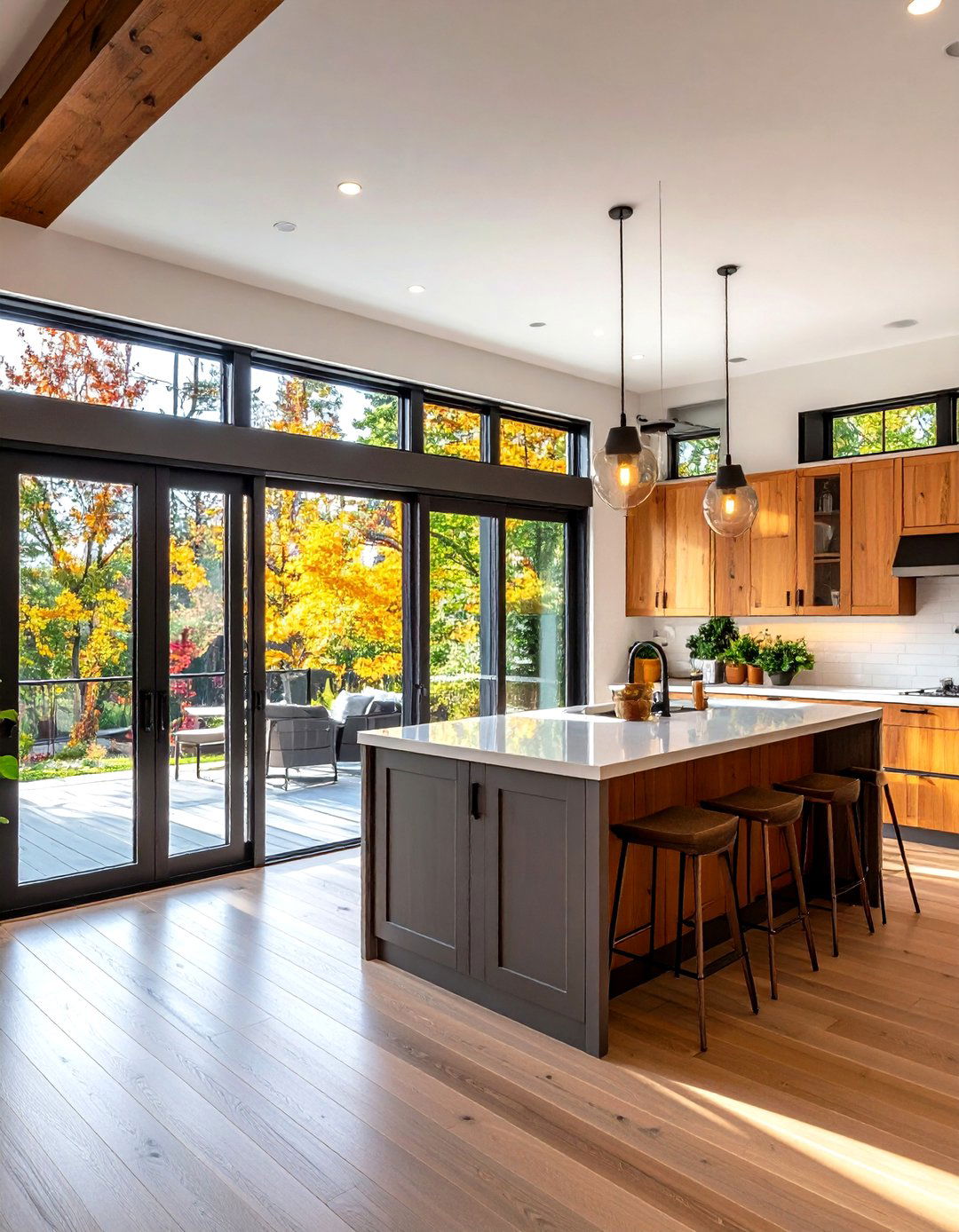
Pivot or sliding doors that open onto a patio let herb planters sit inches from the stove and turn dinner prep into an alfresco experience. When shut, the expansive glazing still offers borrowed landscape views, satisfying biophilic cravings even in winter. Specifying low-E coatings ensures the organic kitchen enjoys nature’s theater without UV damage to wood finishes.
18. Salvaged Stone or Brick Backsplashes Tell a Story

Reusing century-old limestone floor tiles or weathered bricks behind the range provides instant patina and keeps demolition debris out of landfills. Seal porous pieces with food-safe beeswax to repel splatters while preserving tactile depth. The subtle color variation harmonizes with reclaimed wood and honed counters, tying every layer of your organic kitchen back to earth.
19. Air-Purifying Plants Enhance Indoor Ecology
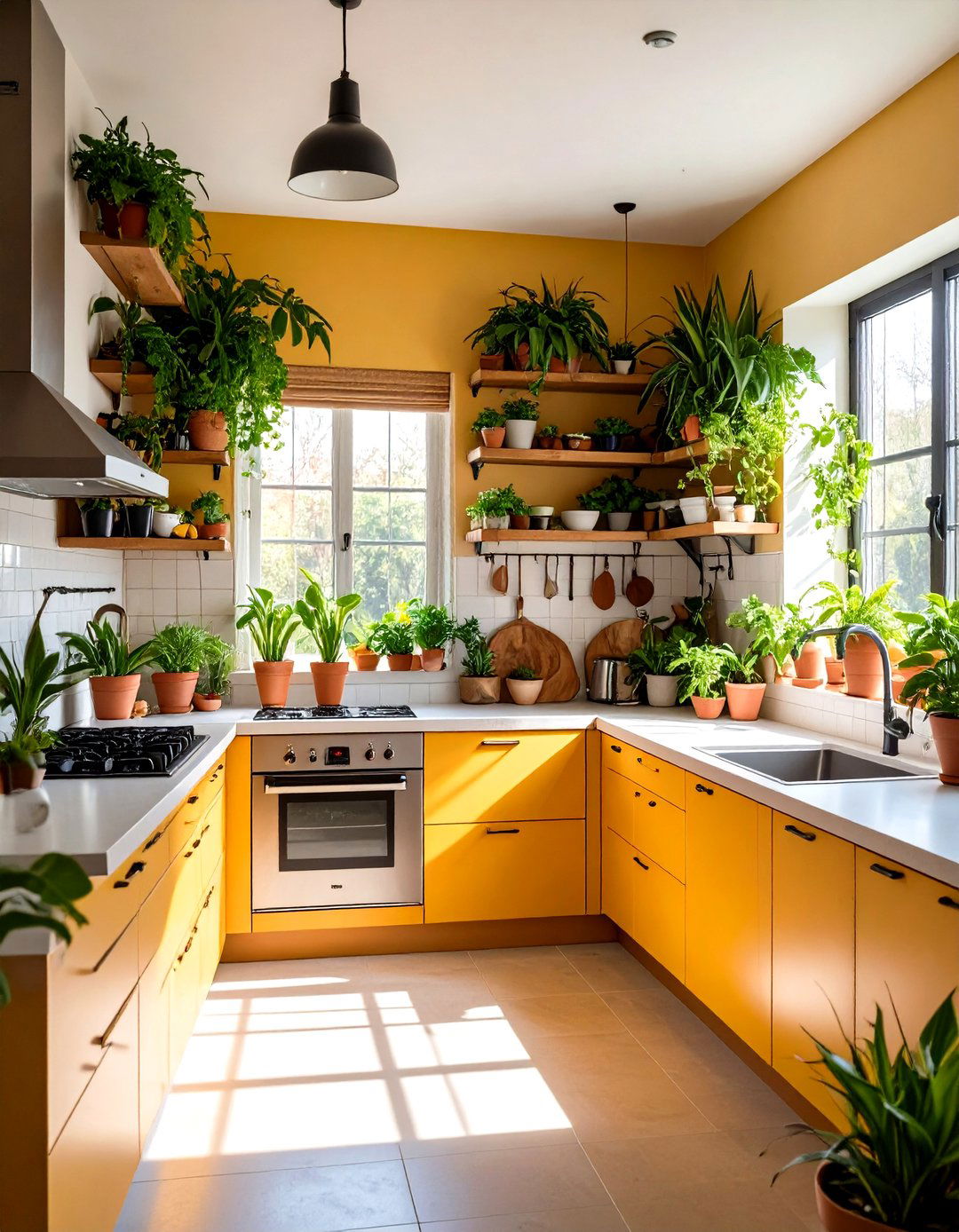
Spider plants, pothos, and dwarf citrus trees not only enliven blank corners but actively remove VOCs such as formaldehyde and benzene. Designers recommend placing taller specimens near the fridge to soften its blocky silhouette and using wall-hung planters to free up prep real estate. Regular misting mirrors the mindful rituals that characterize an organic kitchen lifestyle.
20. Integrated Recycling Centers Streamline Sorting
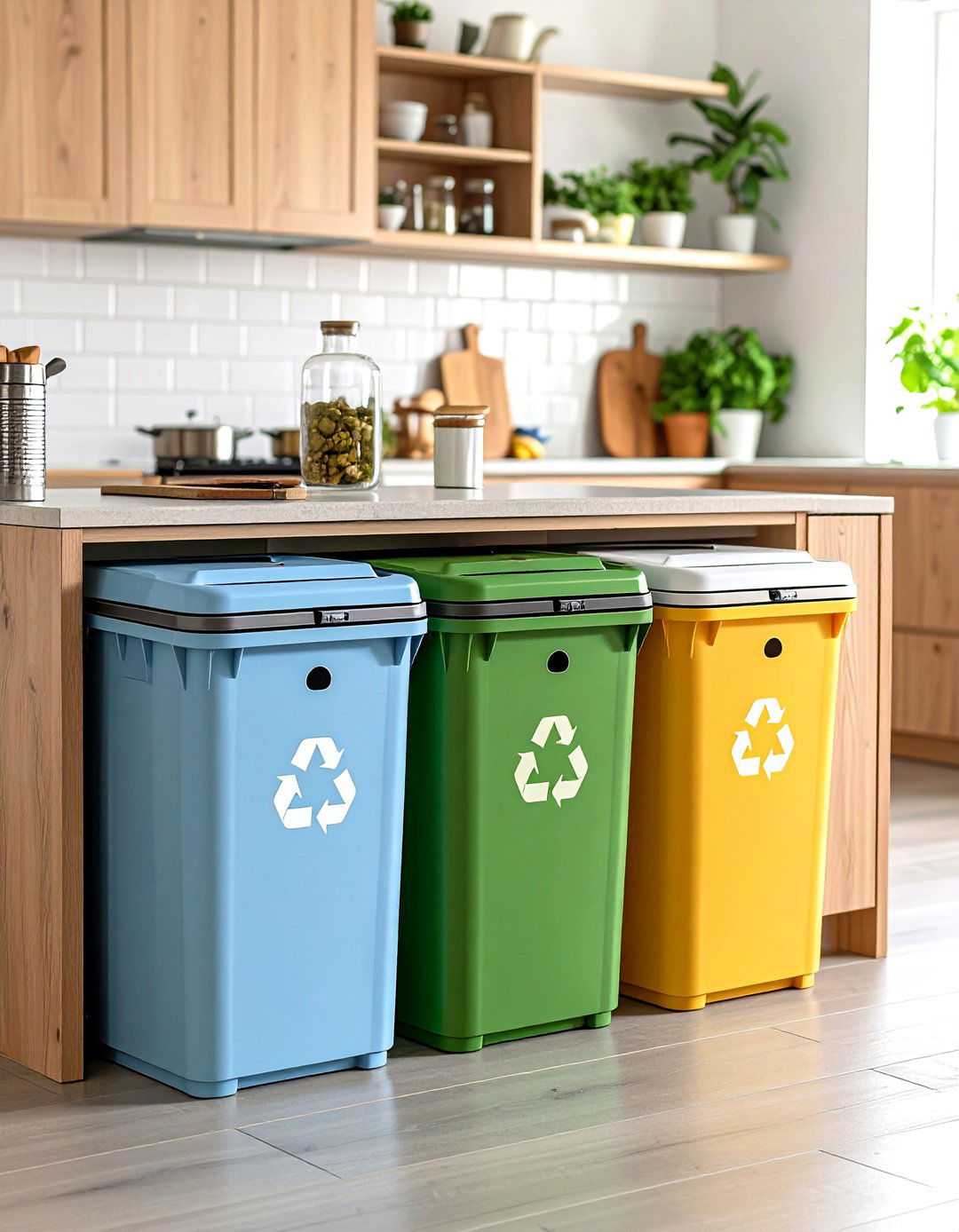
Pull-out triple bins labeled glass, metal, and paper hide clutter yet keep eco-habits intuitive. Soft-close slides prevent spills, and vented lids reduce condensation build-up. Mount a slim magnetic board on the inside of the door to post local sorting guidelines; visual cues reinforce consistency for kids and guests alike. Such thoughtful organization is the quiet backbone of every high-functioning organic kitchen.
21. Handmade Ceramic Tiles Celebrate Craft
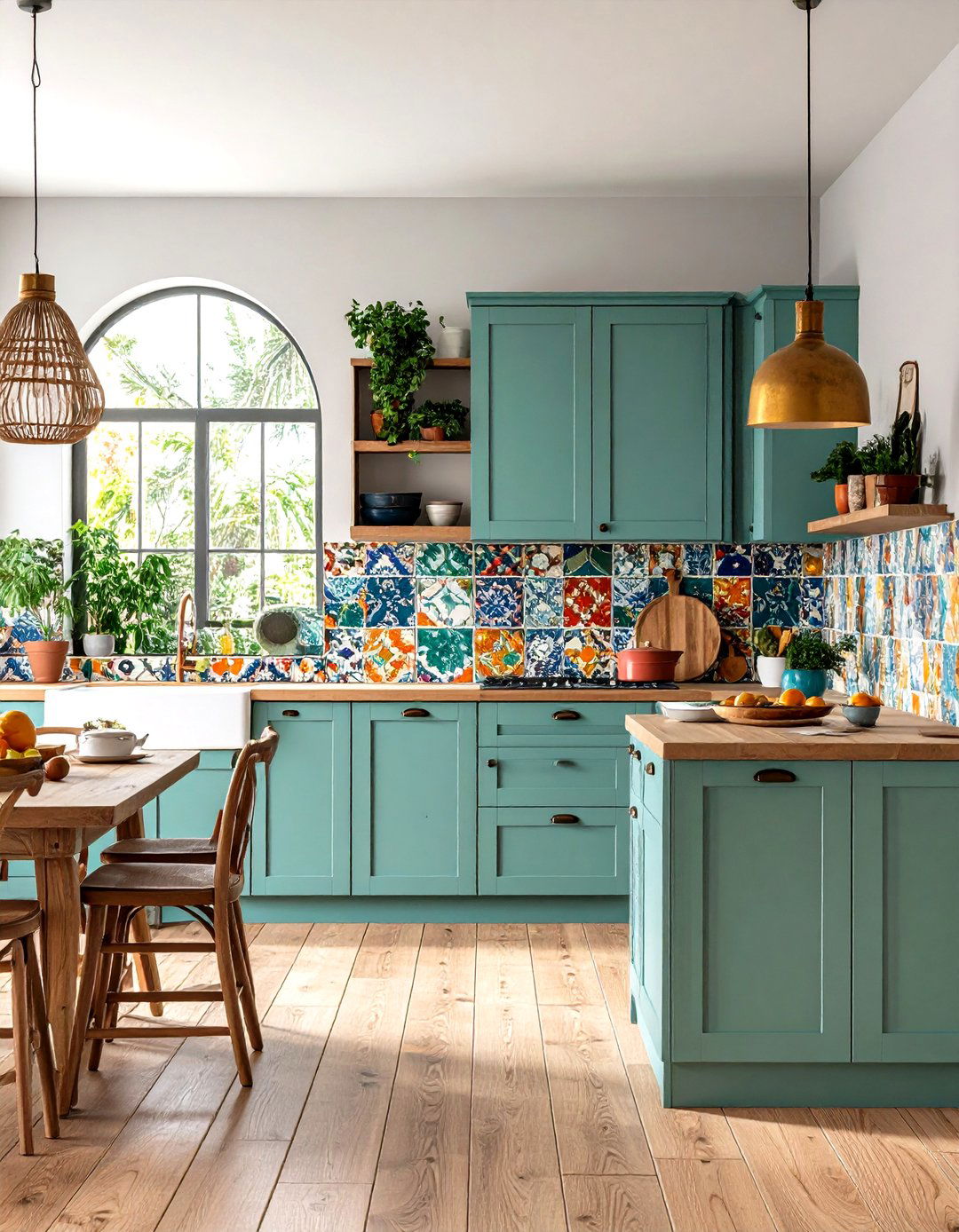
From Moroccan zellige to California-made recycled-clay mosaics, artisanal tiles flash subtle color shifts that machine-perfect subway tile can’t replicate. Fireclay’s Debris Series, for instance, contains 60 % recycled content and lets you mix glaze colors by the square foot, eliminating wasteful overruns. Their irregular surface bounces light softly, adding depth without resorting to synthetic shimmer — pure organic kitchen poetry.
22. Zero-VOC Paints Keep Breathing Easy
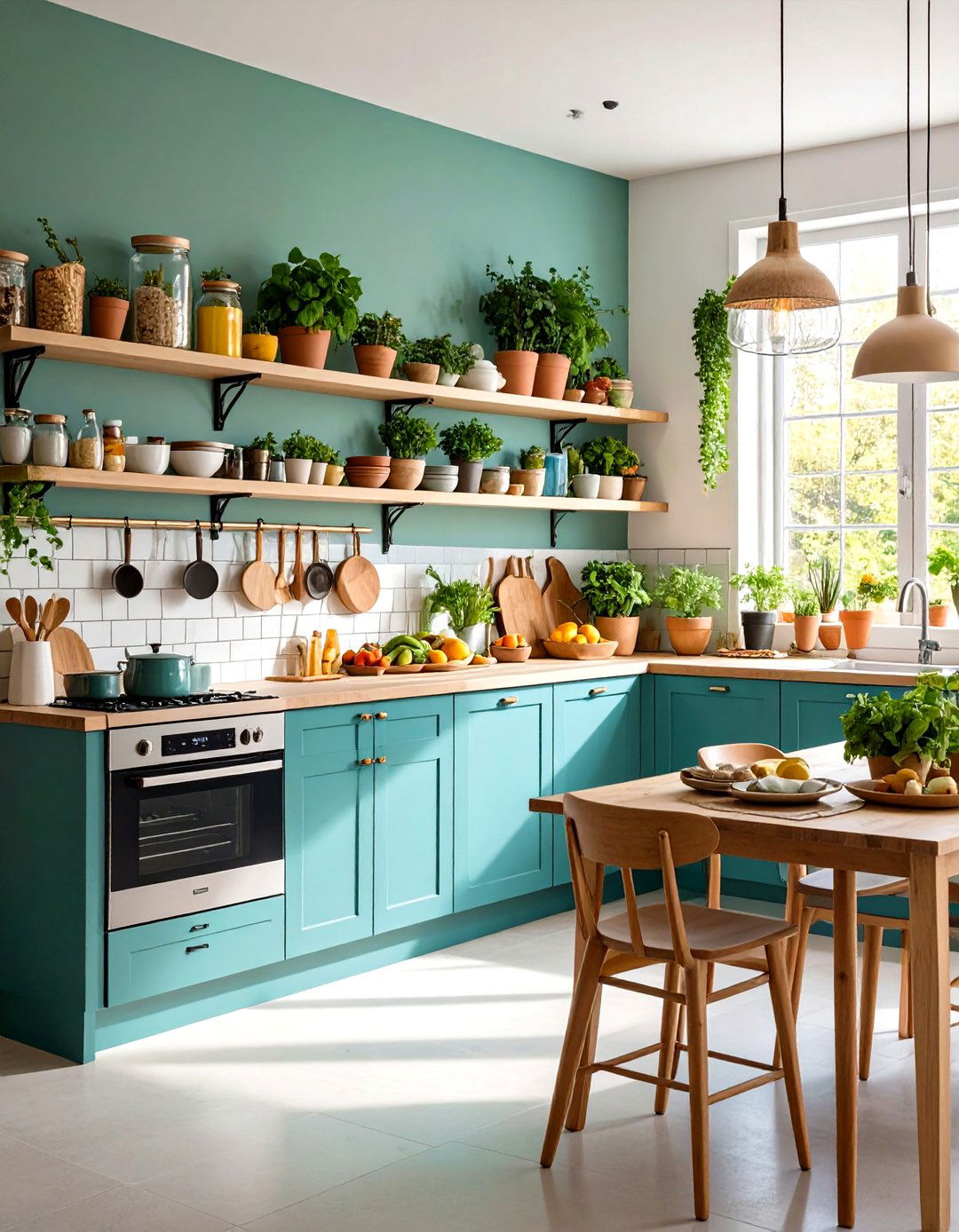
Low- and no-VOC wall paints slash the chemical cocktail associated with fresh remodels, a boon for households with asthma or young children. Milk-based formulas even smell faintly grassy instead of plasticky. While coverage sometimes requires an extra coat, the health gains outweigh the labor. Use a quality water-based primer to improve adhesion and longevity; your organic kitchen deserves both purity and durability.
23. Cushy Cork Flooring Is Gentle on Joints

Despite its softness, cork naturally repels mold and contains suberin, a waxy substance that resists spills. Harvesting merely strips bark — no trees felled — making cork a poster child for renewable sourcing. The cushioned feel reduces fatigue during marathon canning sessions, and its visual speckling pairs effortlessly with other organic kitchen textures. Opt for click-lock planks finished in water-based sealers for easiest DIY installation.
24. Untreated Wood Drawer Dividers Simplify Mise-En-Place
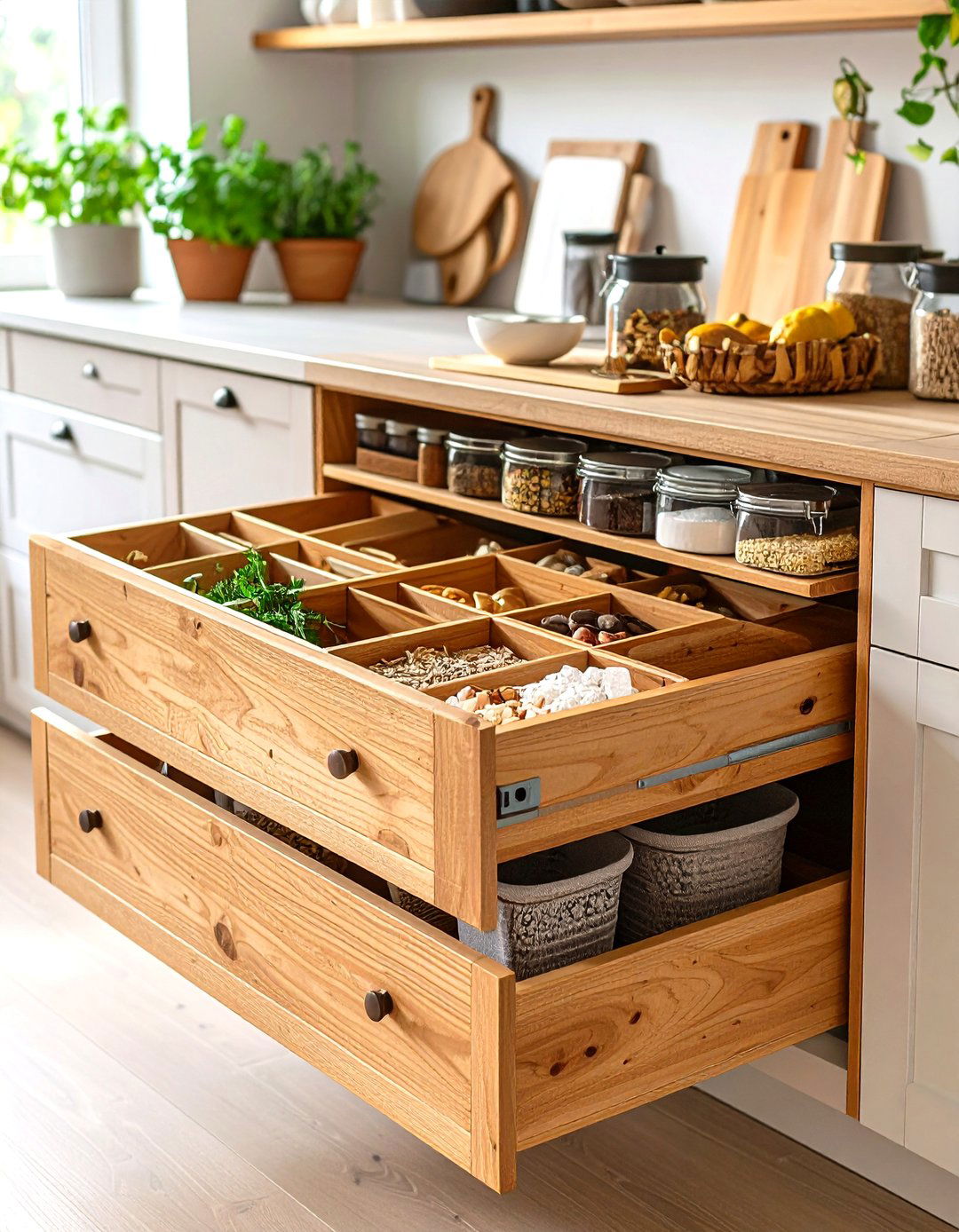
Deep drawers fitted with adjustable solid-maple partitions keep spatulas, ladles, and whisks in neat formation. Unlike plastic inserts, unfinished hardwood absorbs minor moisture and imparts no petrochemical smell to linens or produce bags. Labeling the tops of dividers with pencil (erasable) encourages the family to return items correctly, reinforcing the orderly habits that underpin an organic kitchen.
25. Smart, Energy-Efficient Appliances Future-Proof the Space
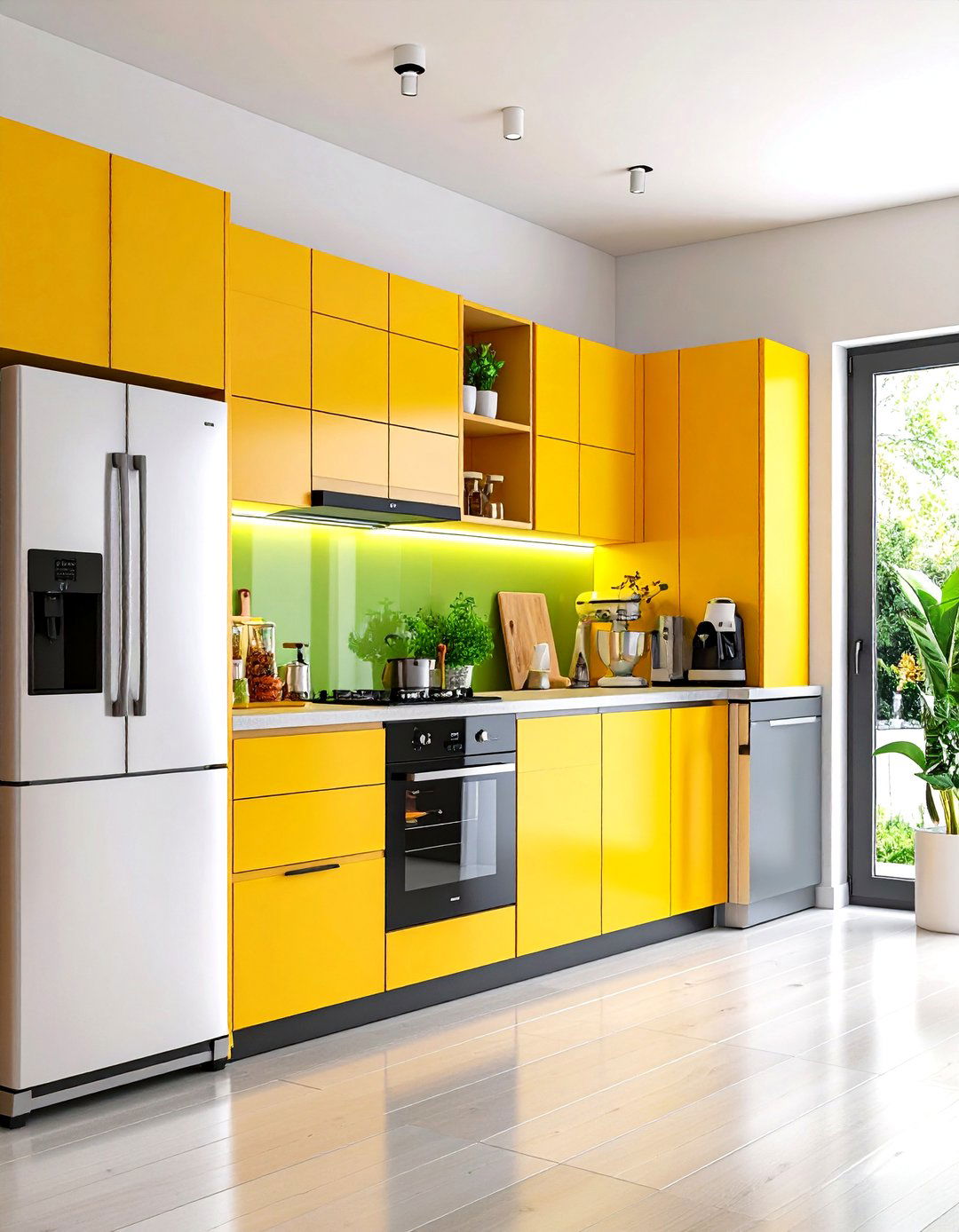
Wi-Fi – enabled dishwashers that auto-dose detergent and fridges that send spoilage alerts cut both waste and water use. Look for models carrying ENERGY STAR’s 2025 “Most Efficient” badge and featuring accessible controls, so the kitchen serves users of all ages and abilities. Coupled with induction cooking and LED lighting, these appliances complete the virtuous cycle of performance and sustainability at the heart of every forward-thinking organic kitchen.
Conclusion:
Choosing organic kitchen design isn’t merely an aesthetic preference — it’s a holistic commitment to healthier air, lighter footprints, and sensory richness every time you cook. From reclaimed wood cabinetry and honed stone worktops to LED lighting and touchless faucets, each of the 25 ideas above layers beauty with measurable environmental gains. Adopt one or blend many; either way, you craft a culinary space where nature’s wisdom and modern ingenuity meet in perfect, delicious balance.


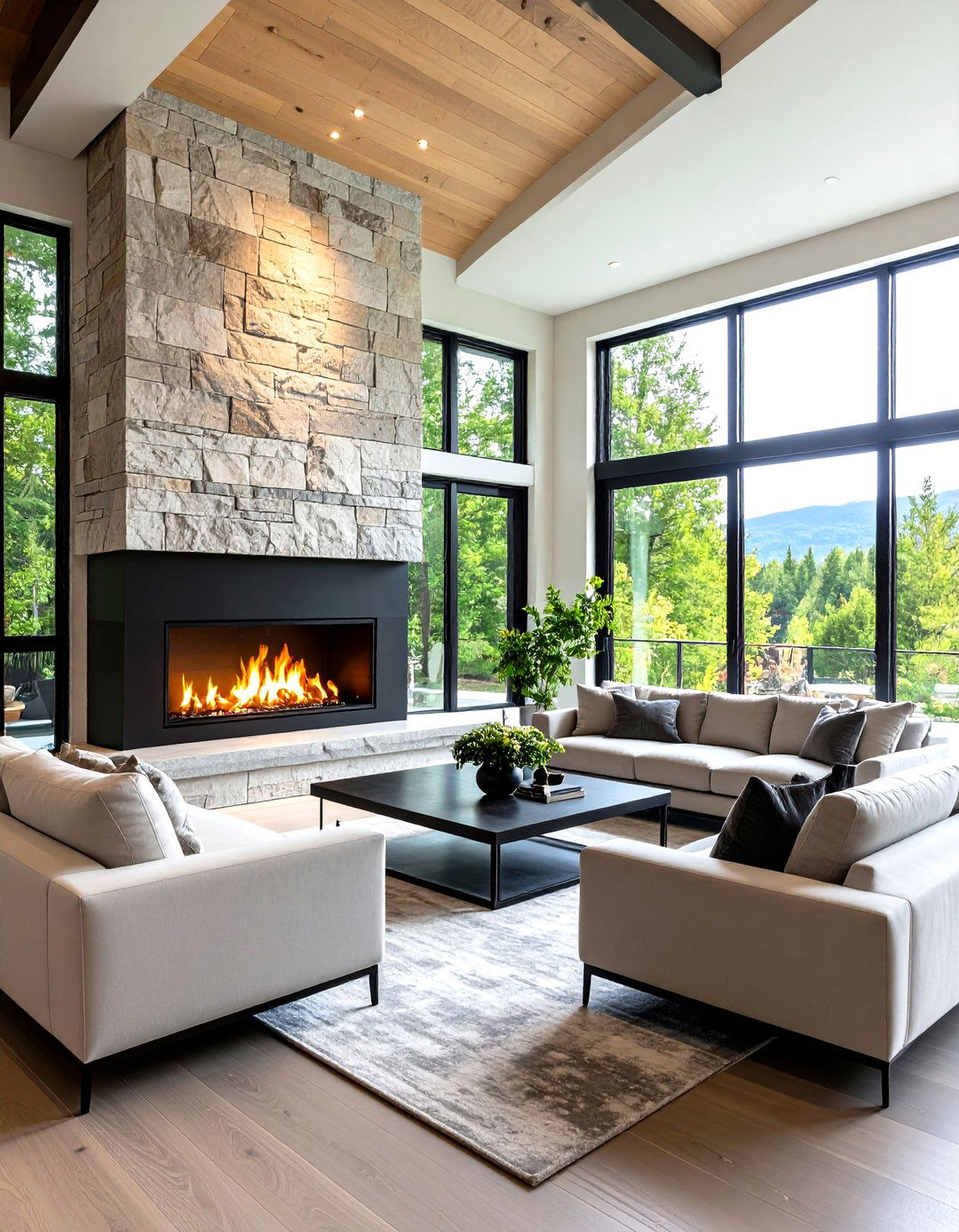

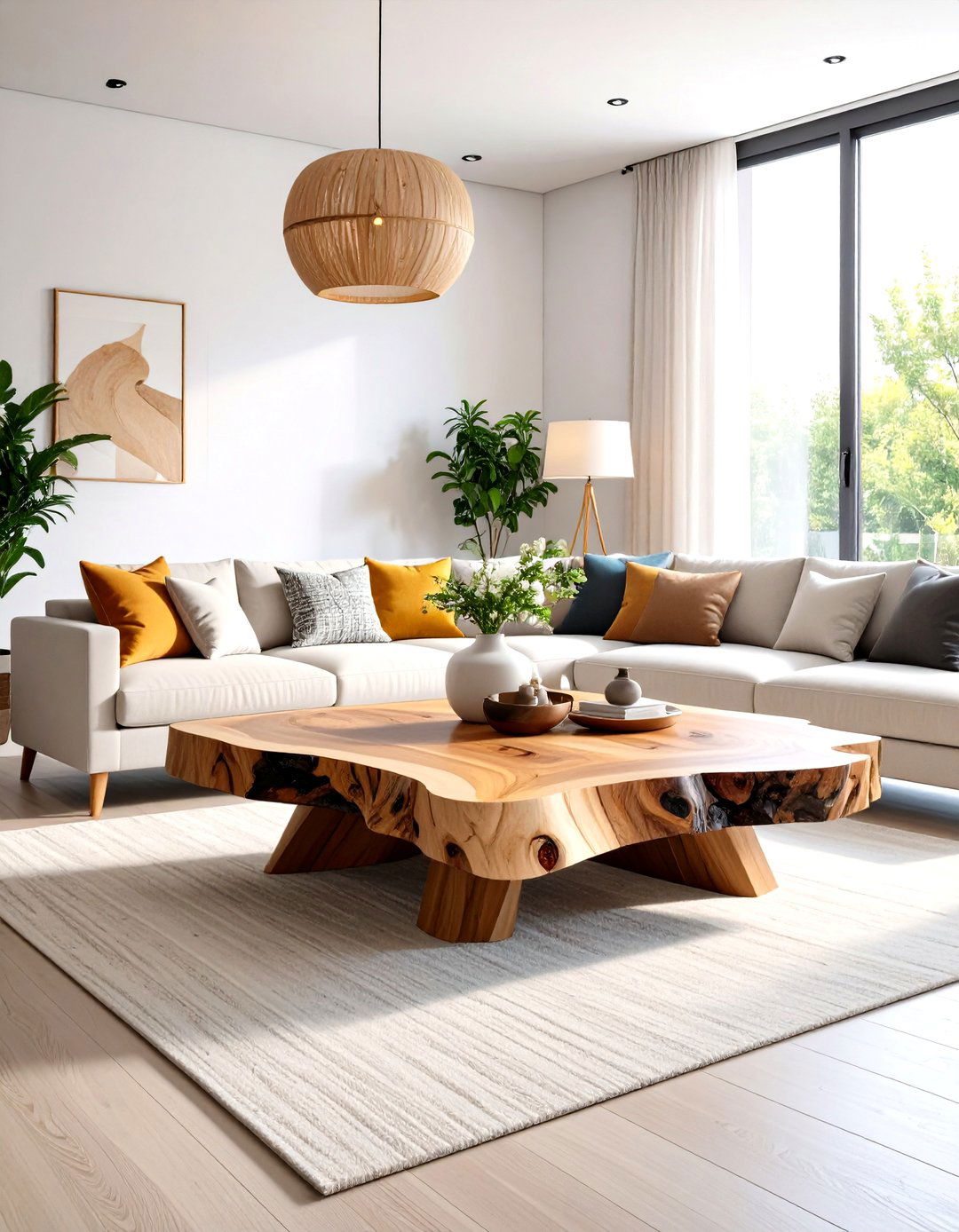
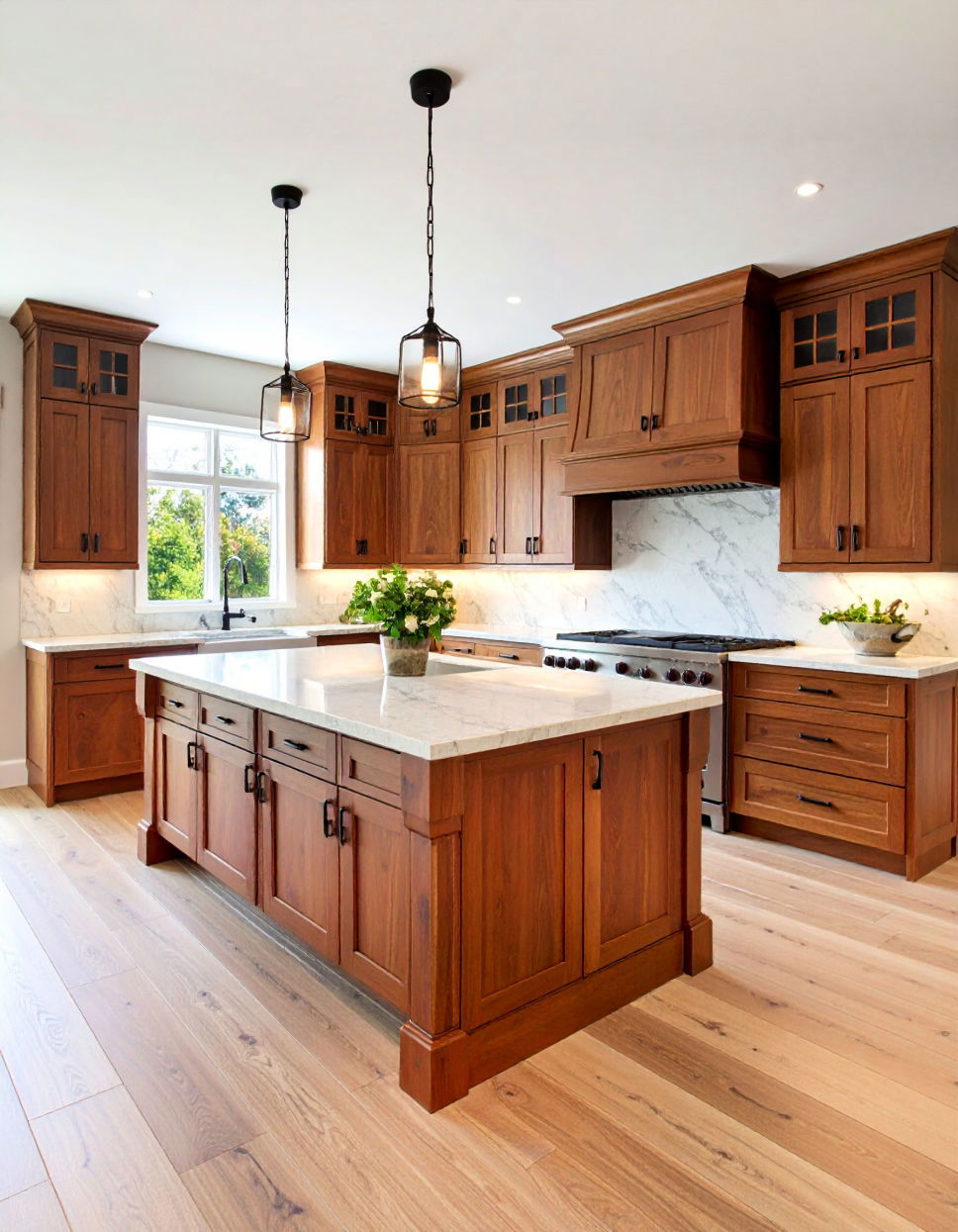
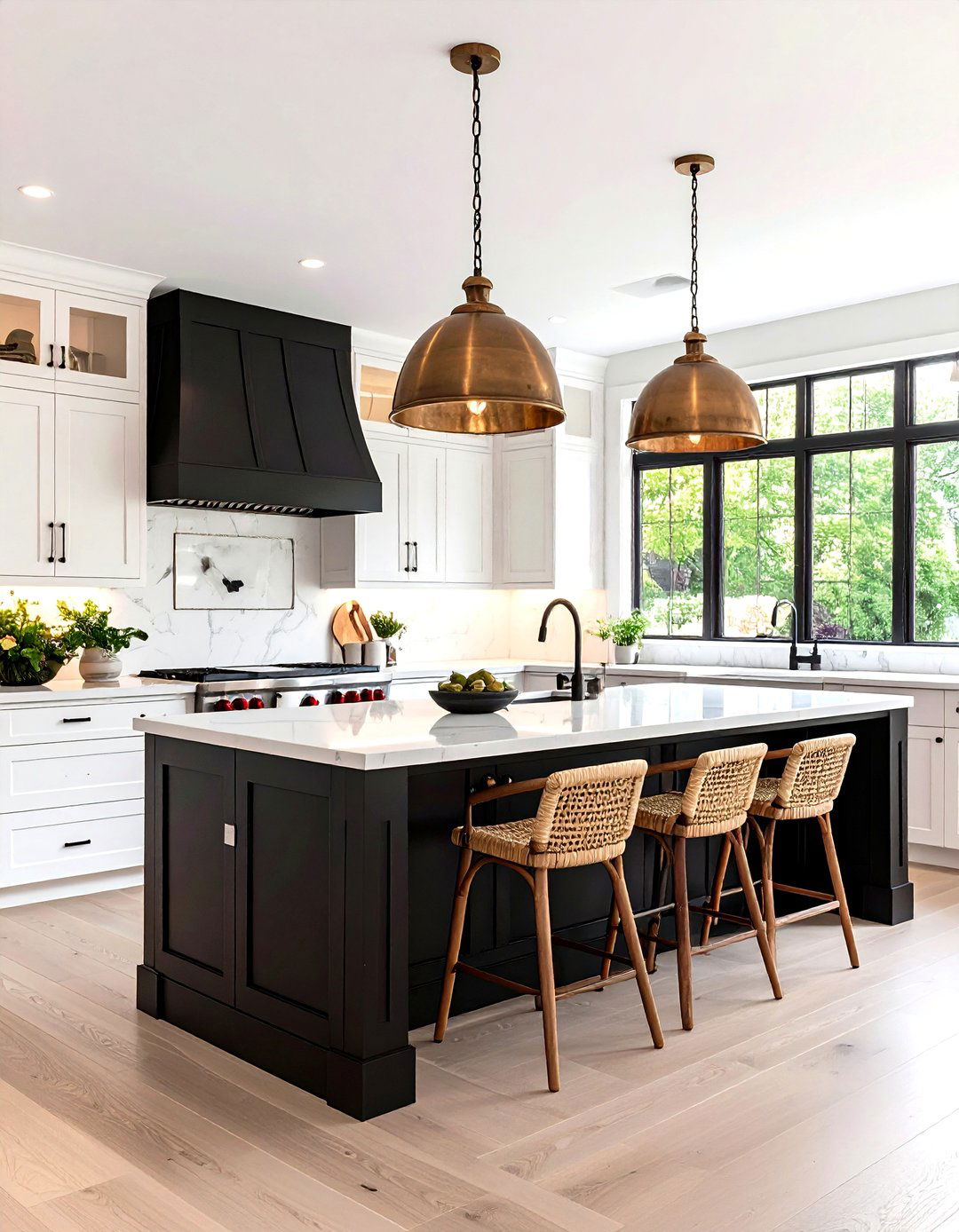
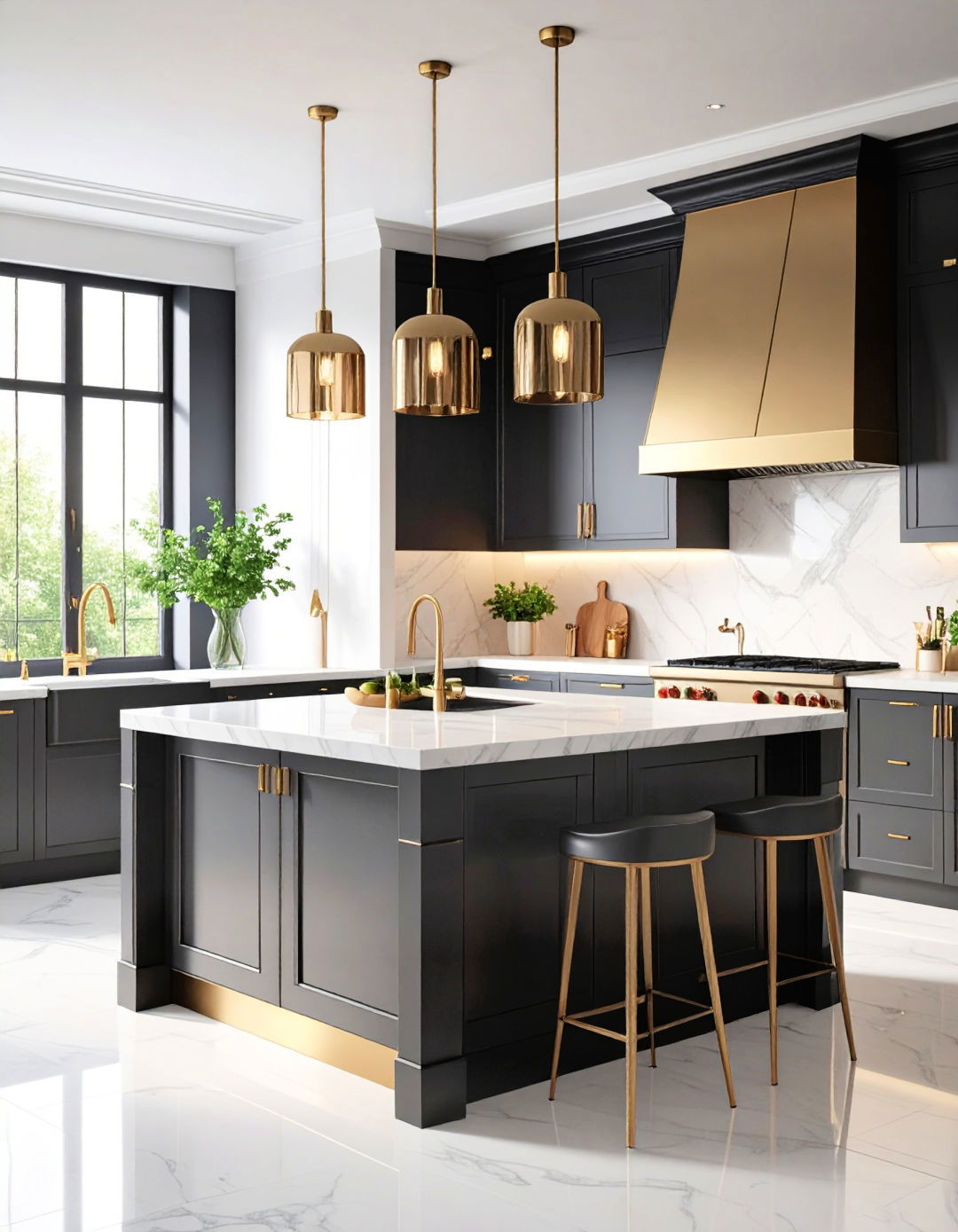

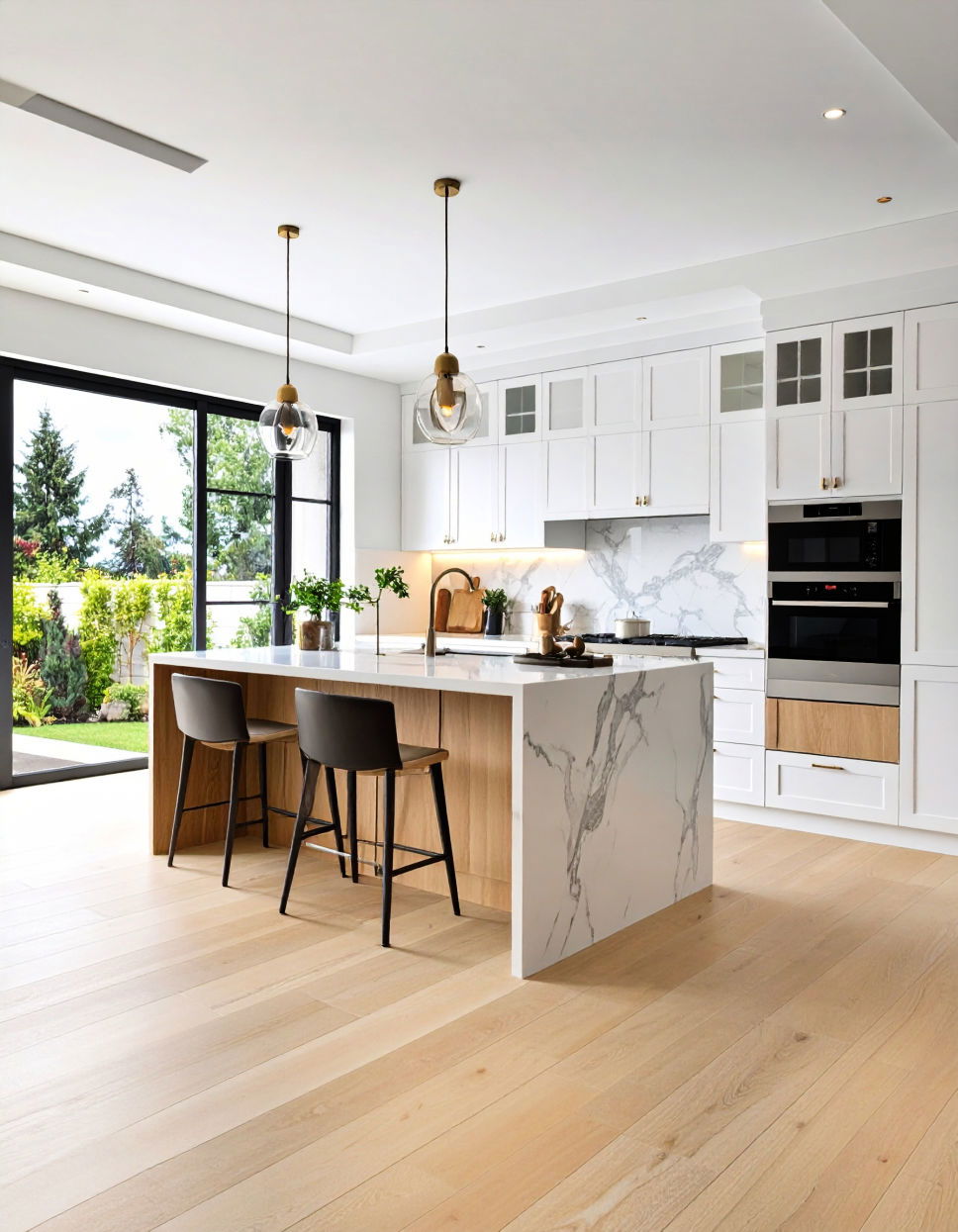
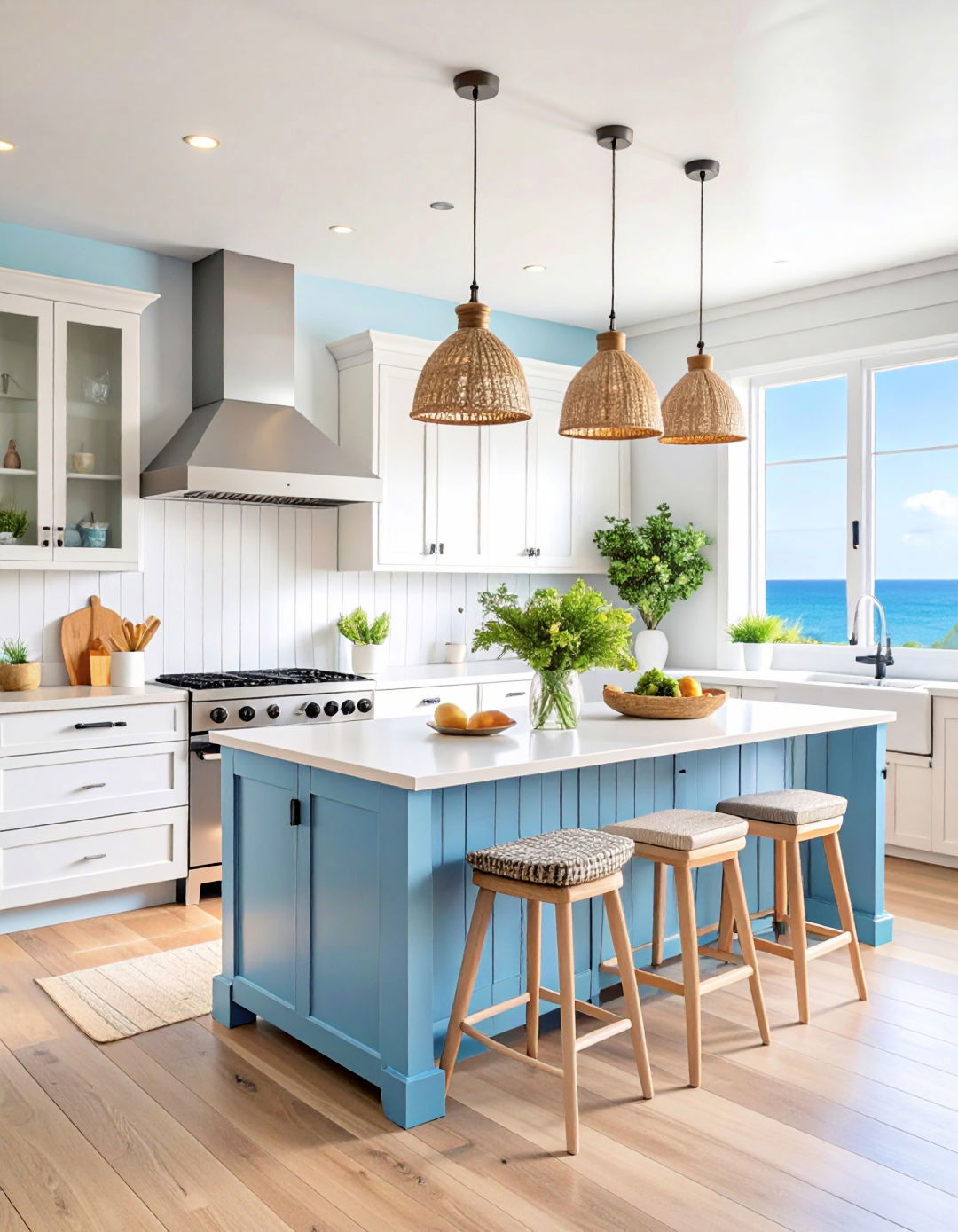
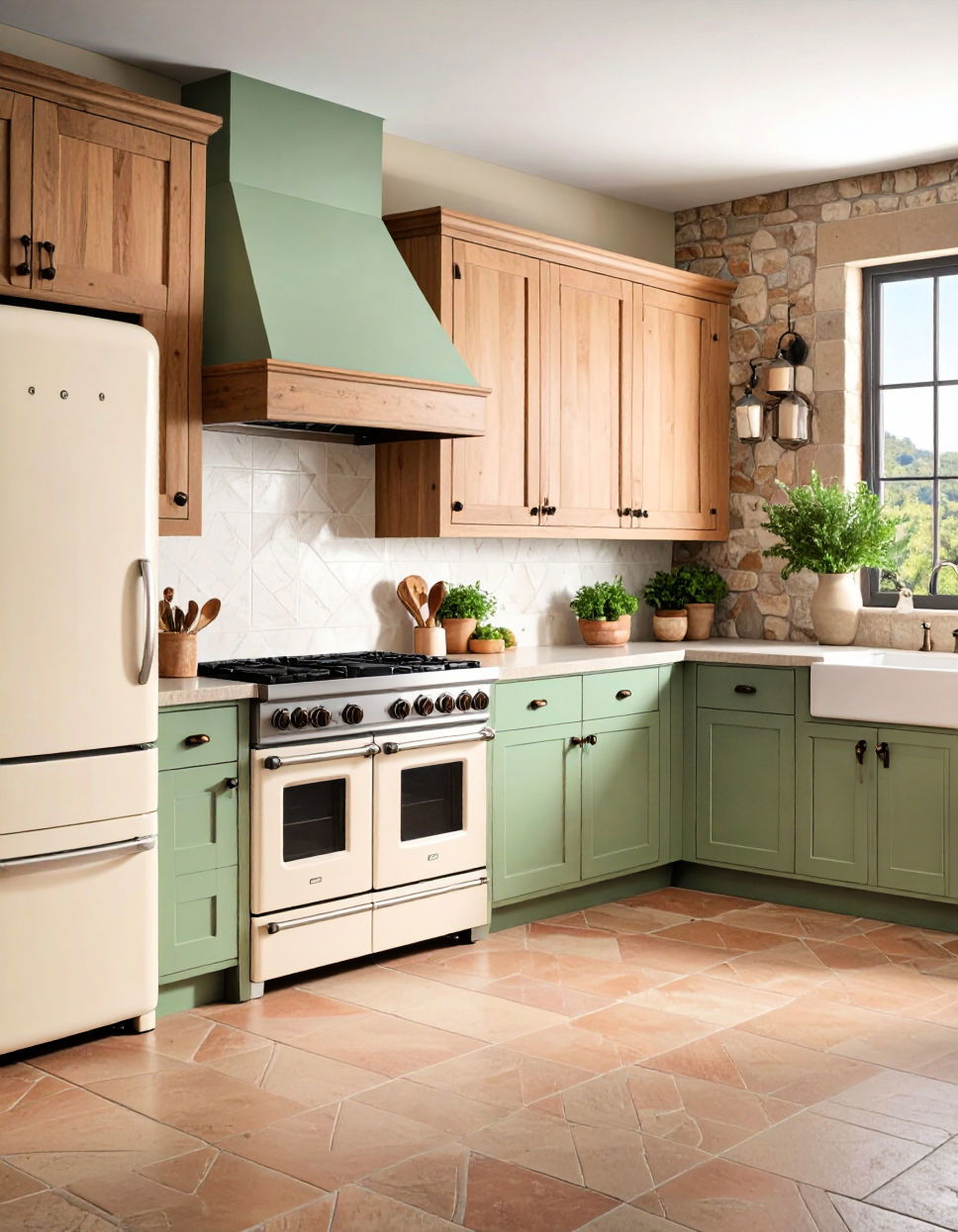
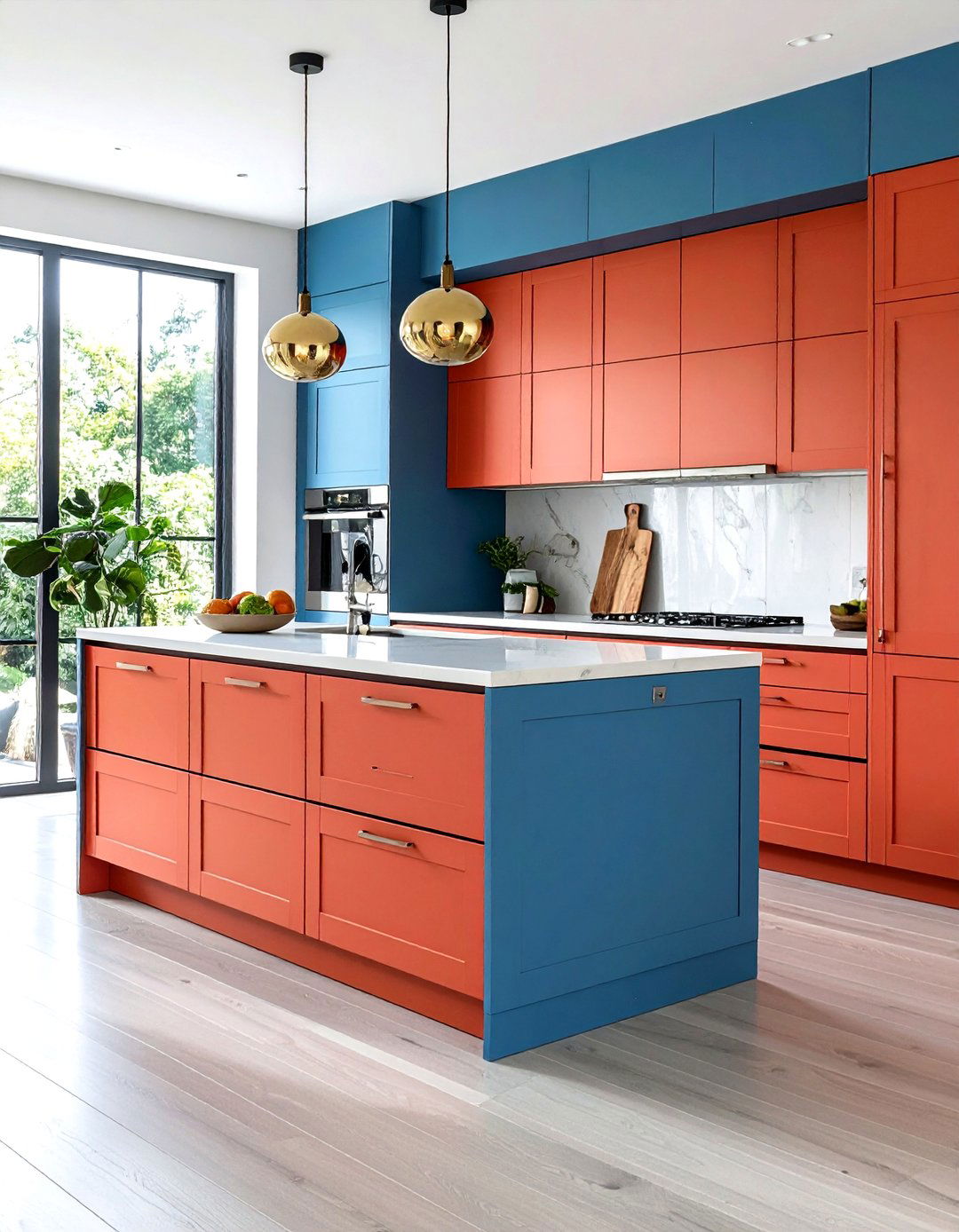
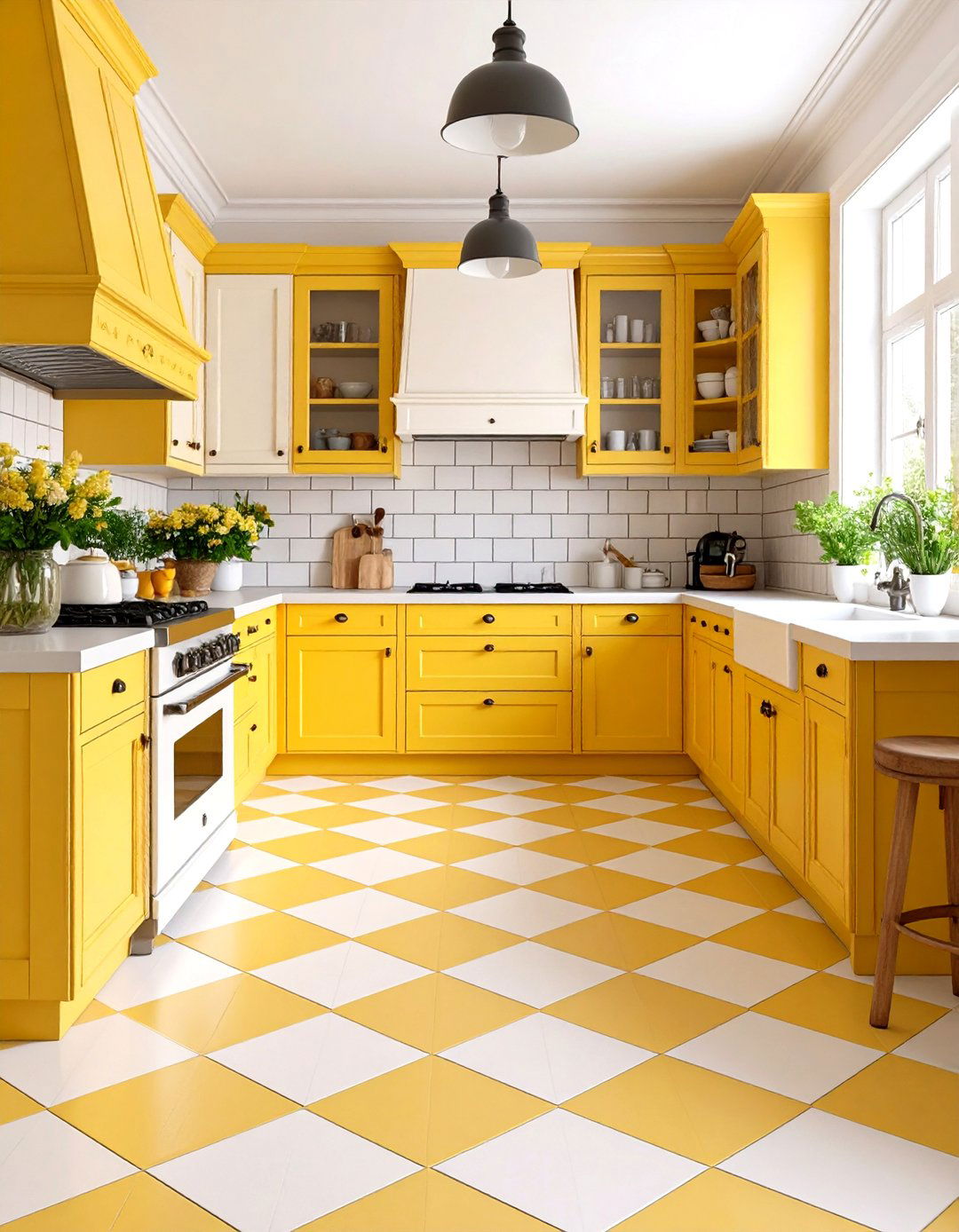
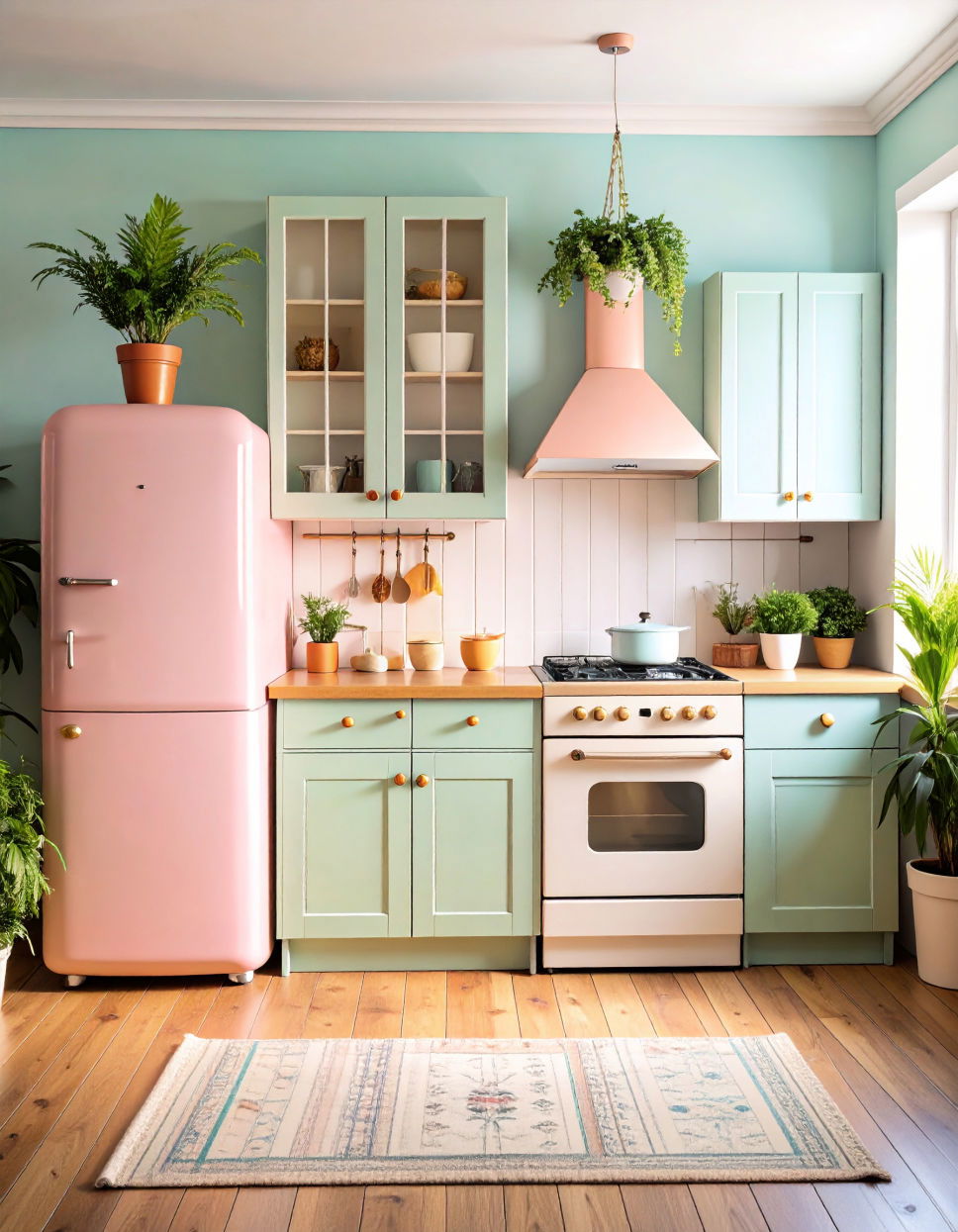
Leave a Reply